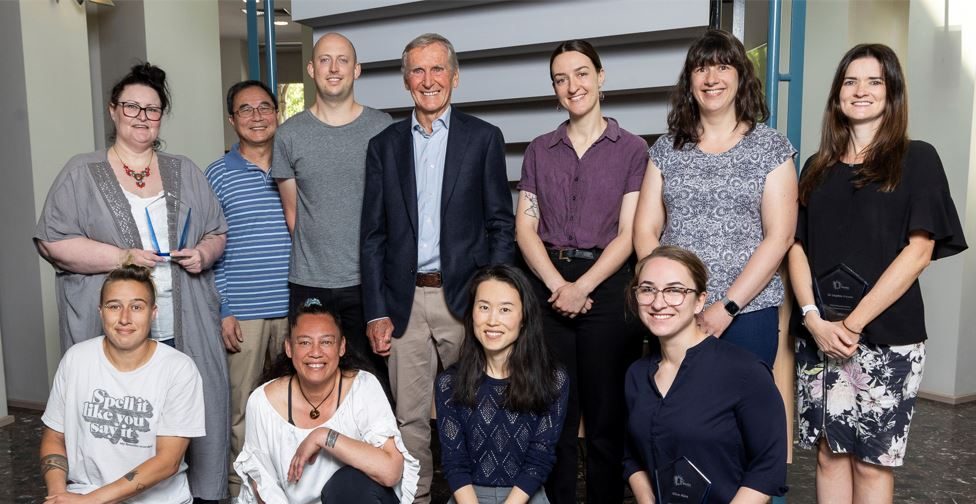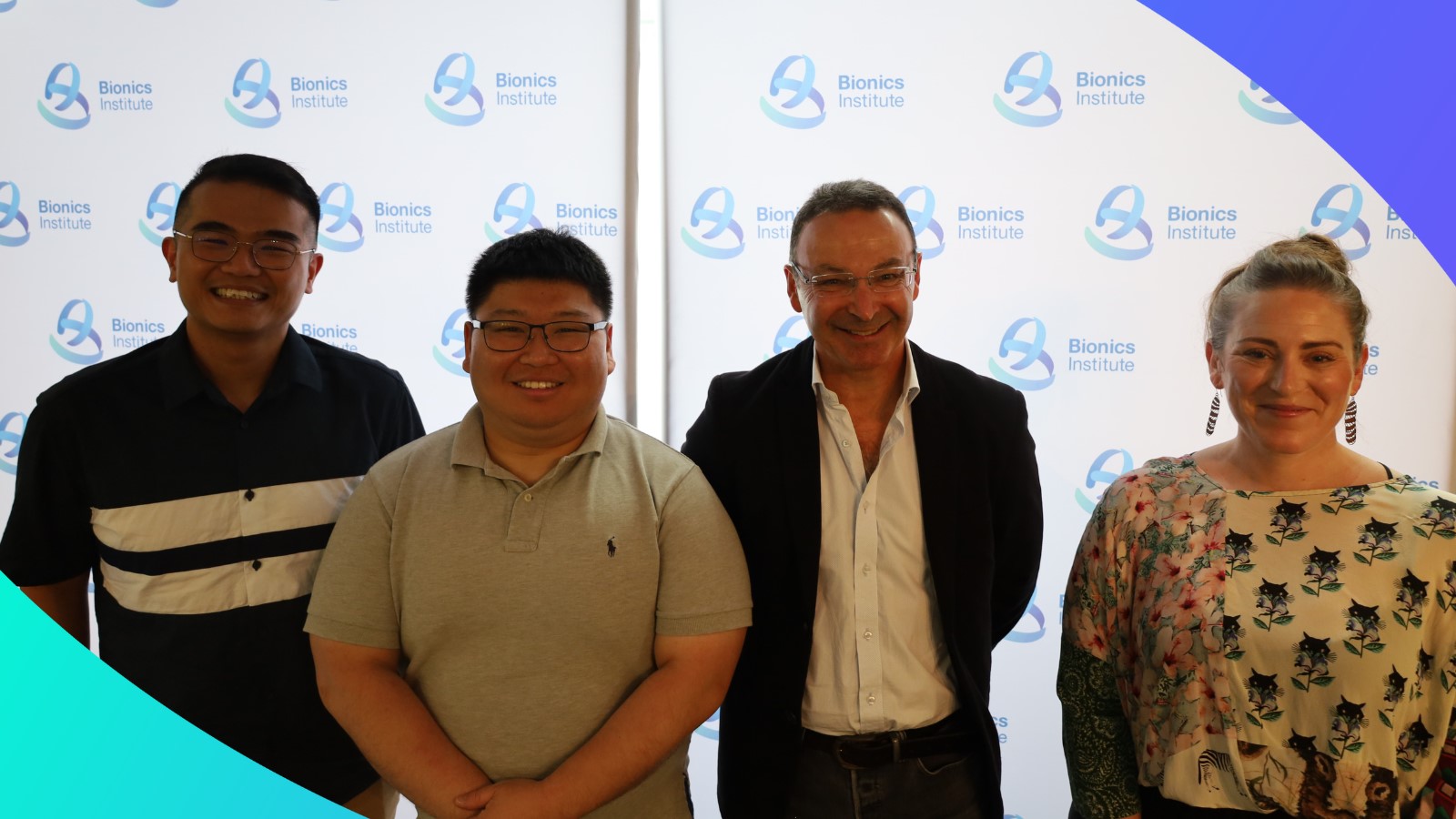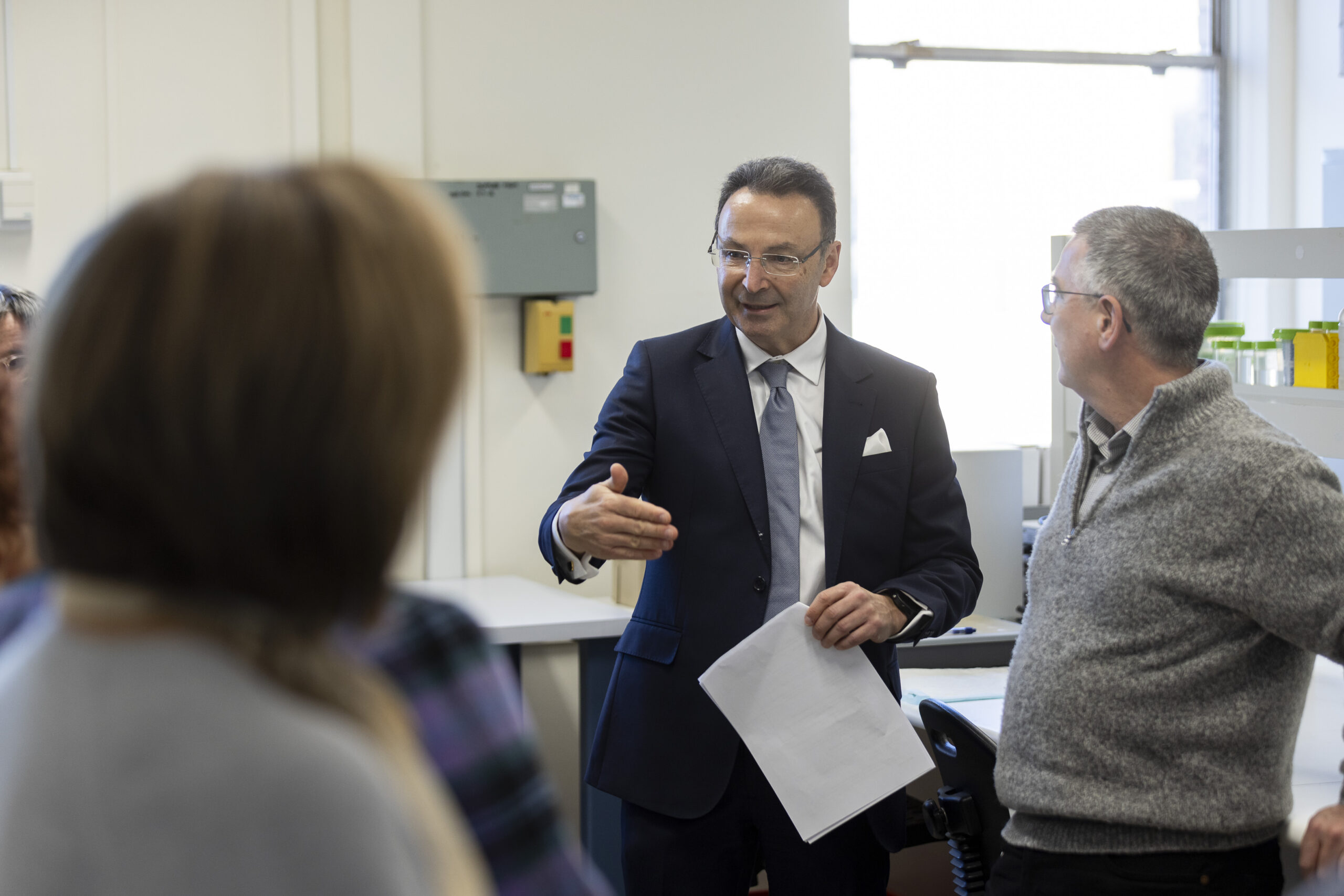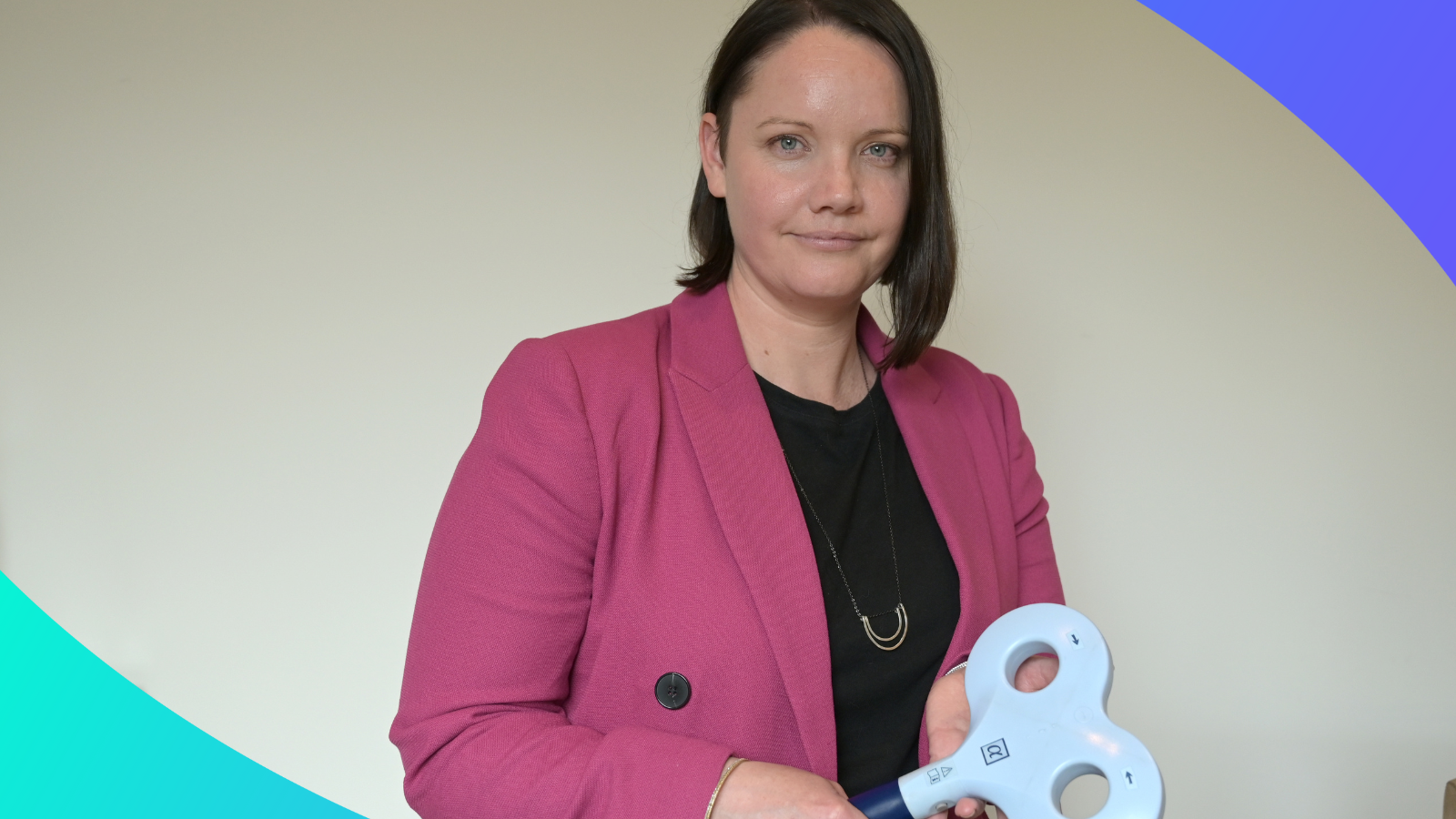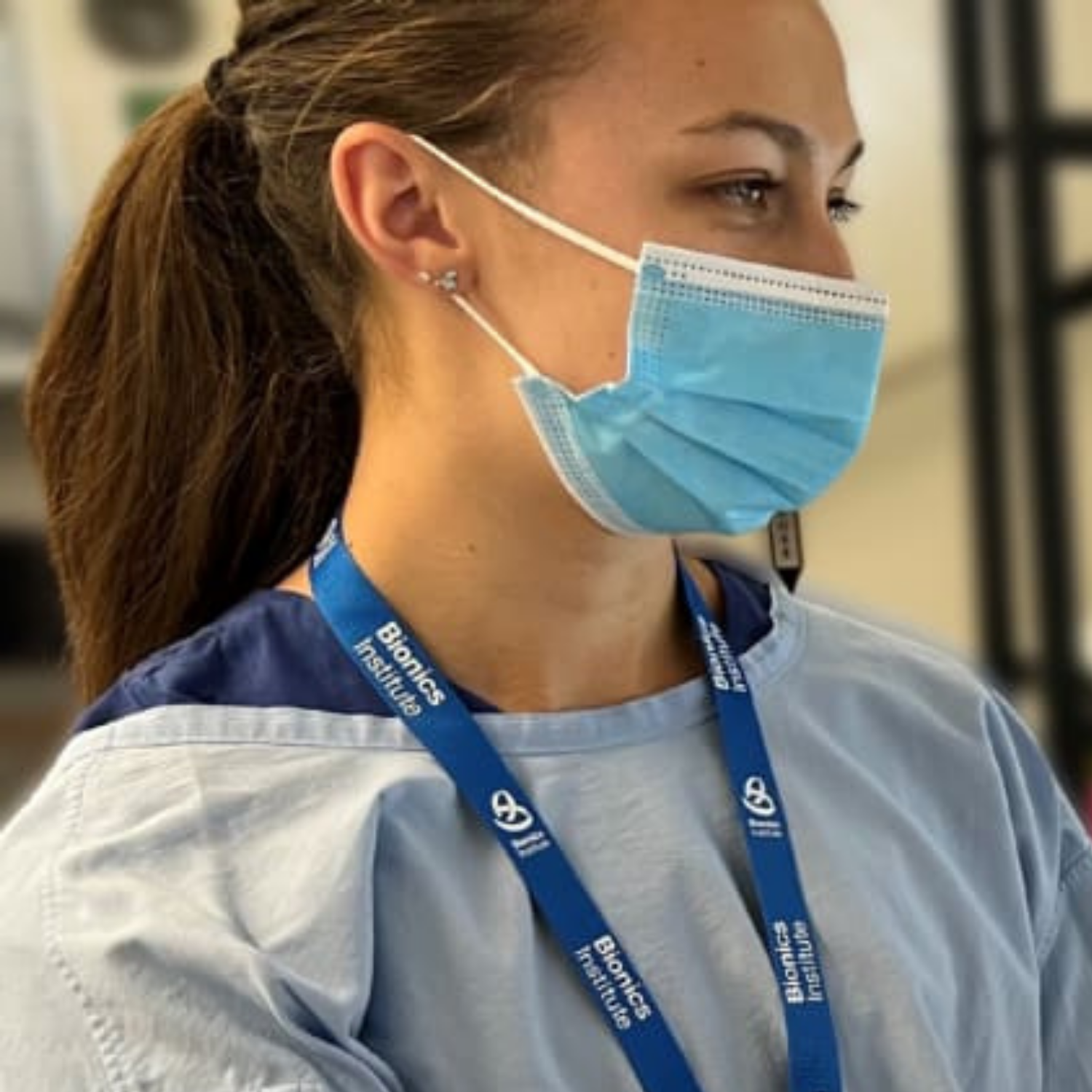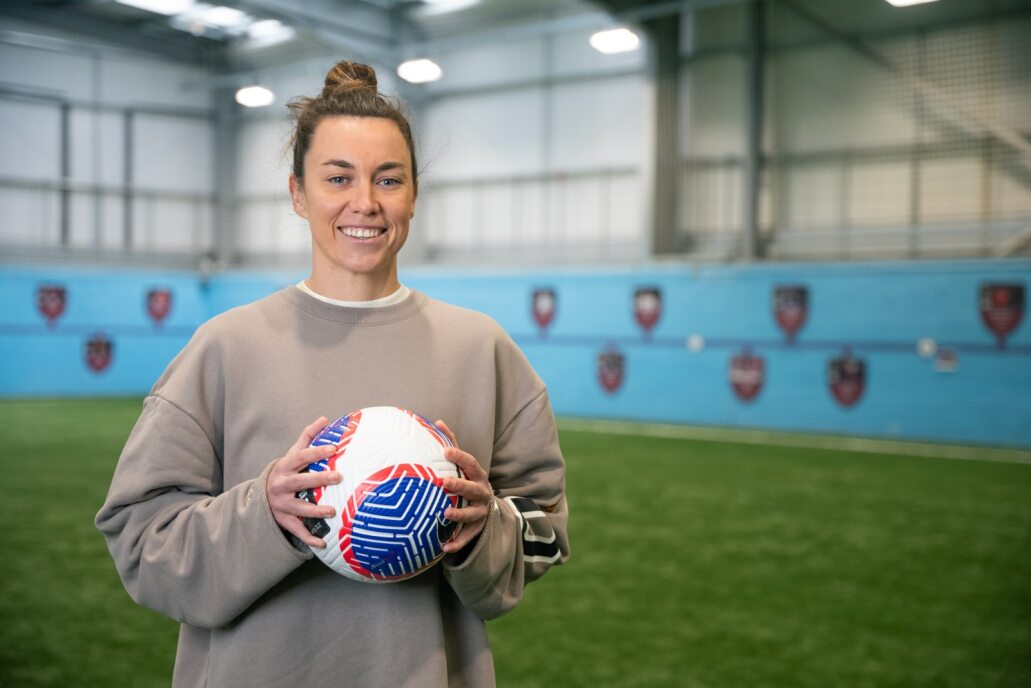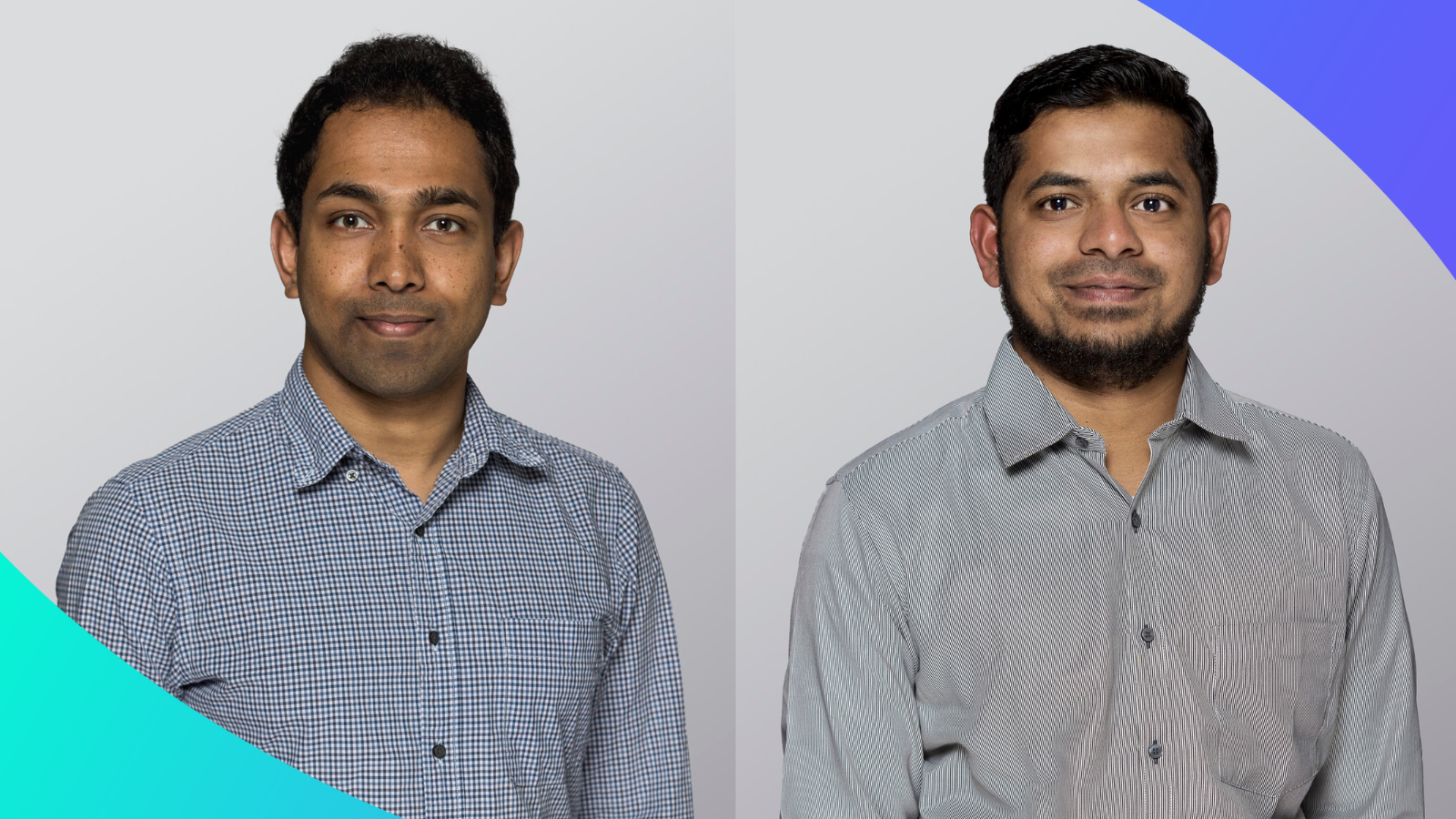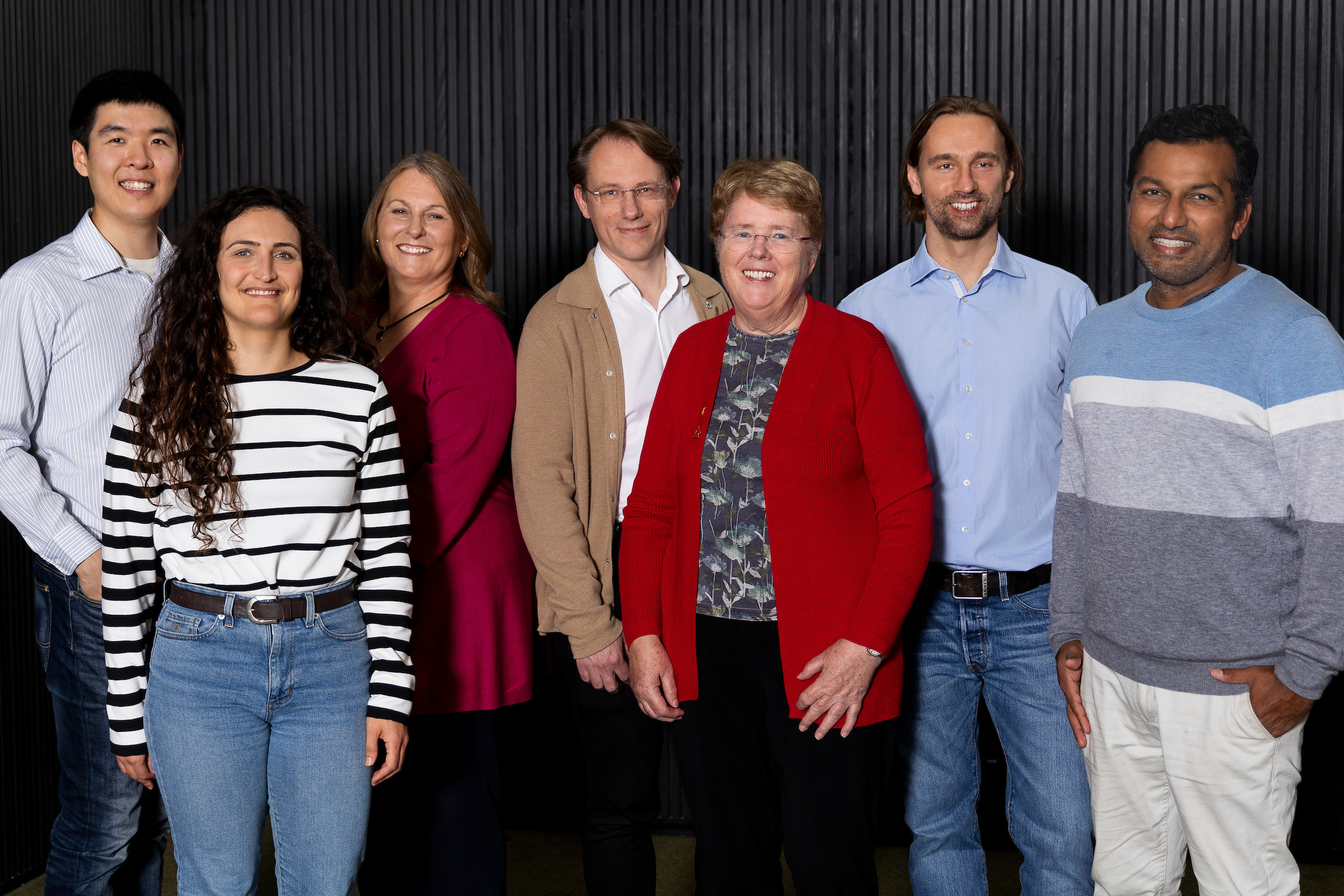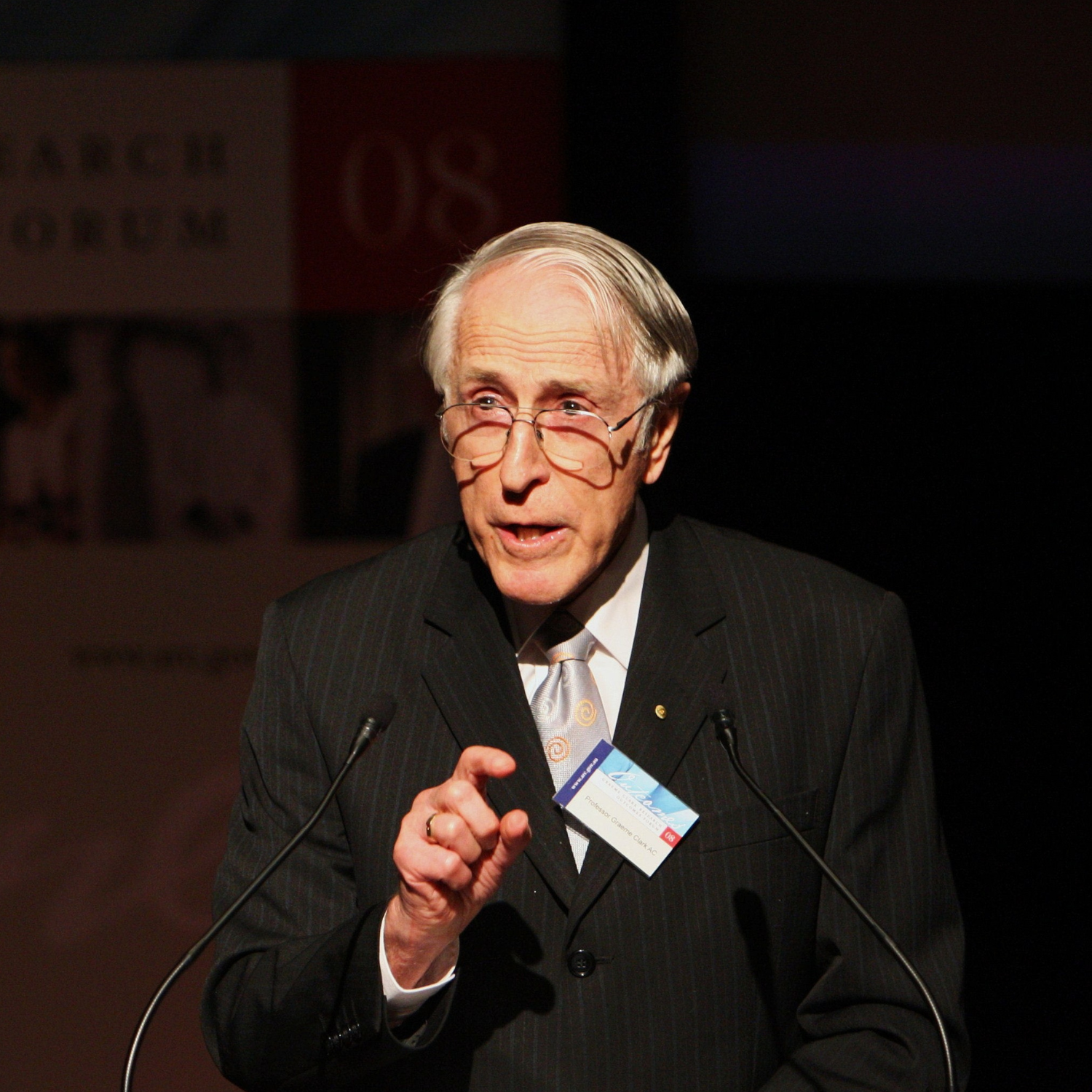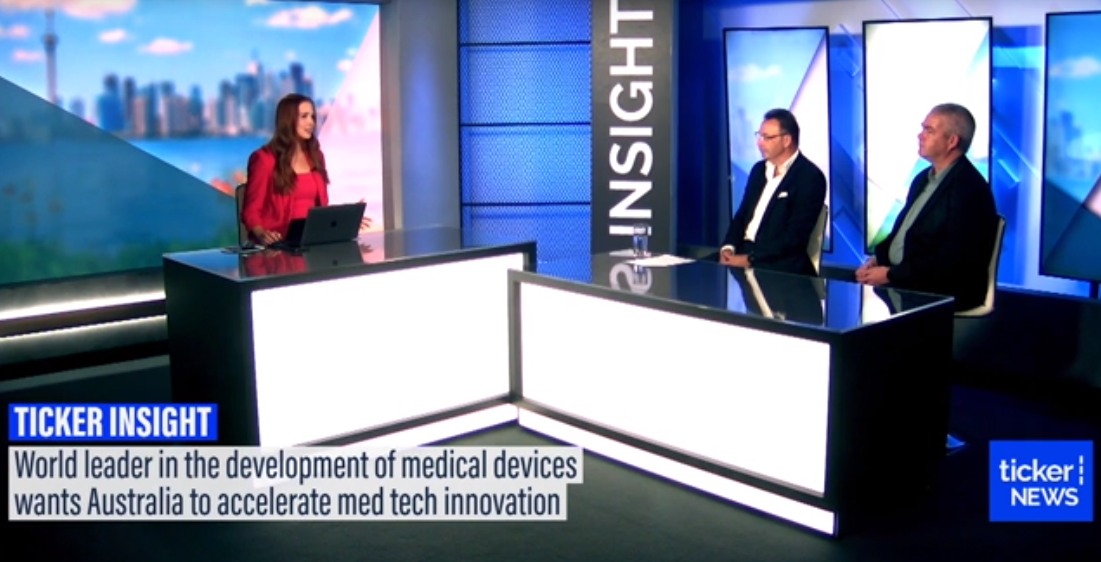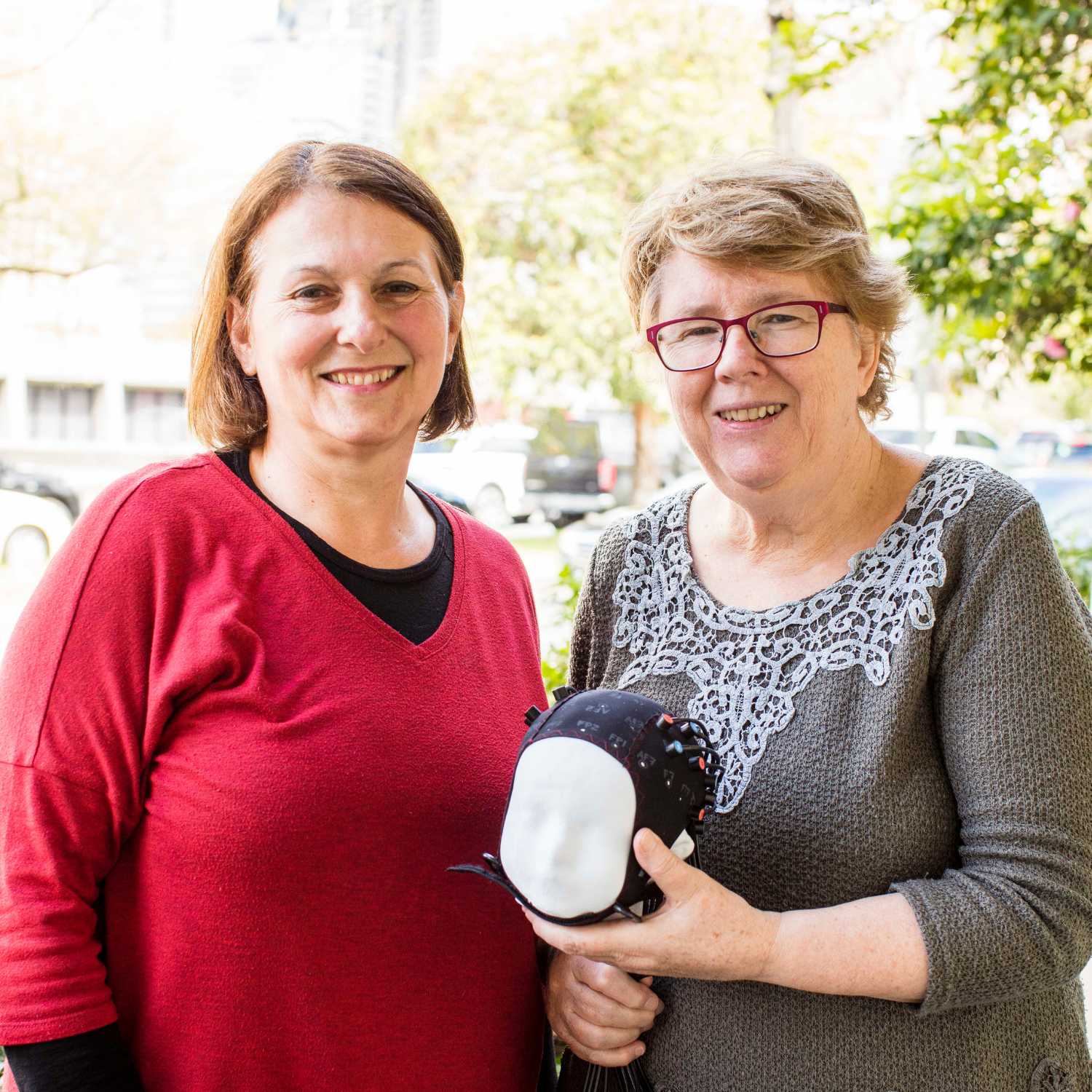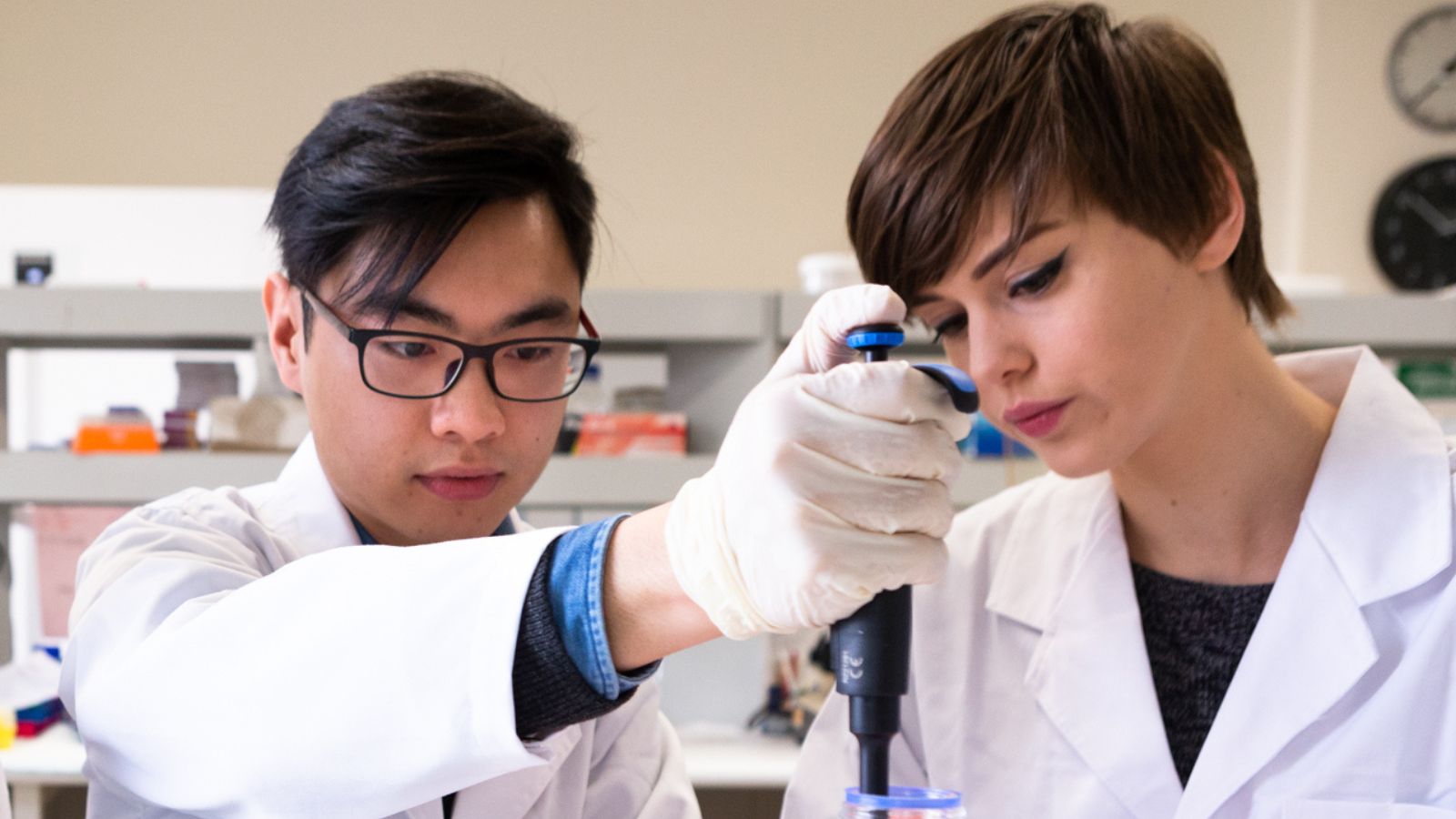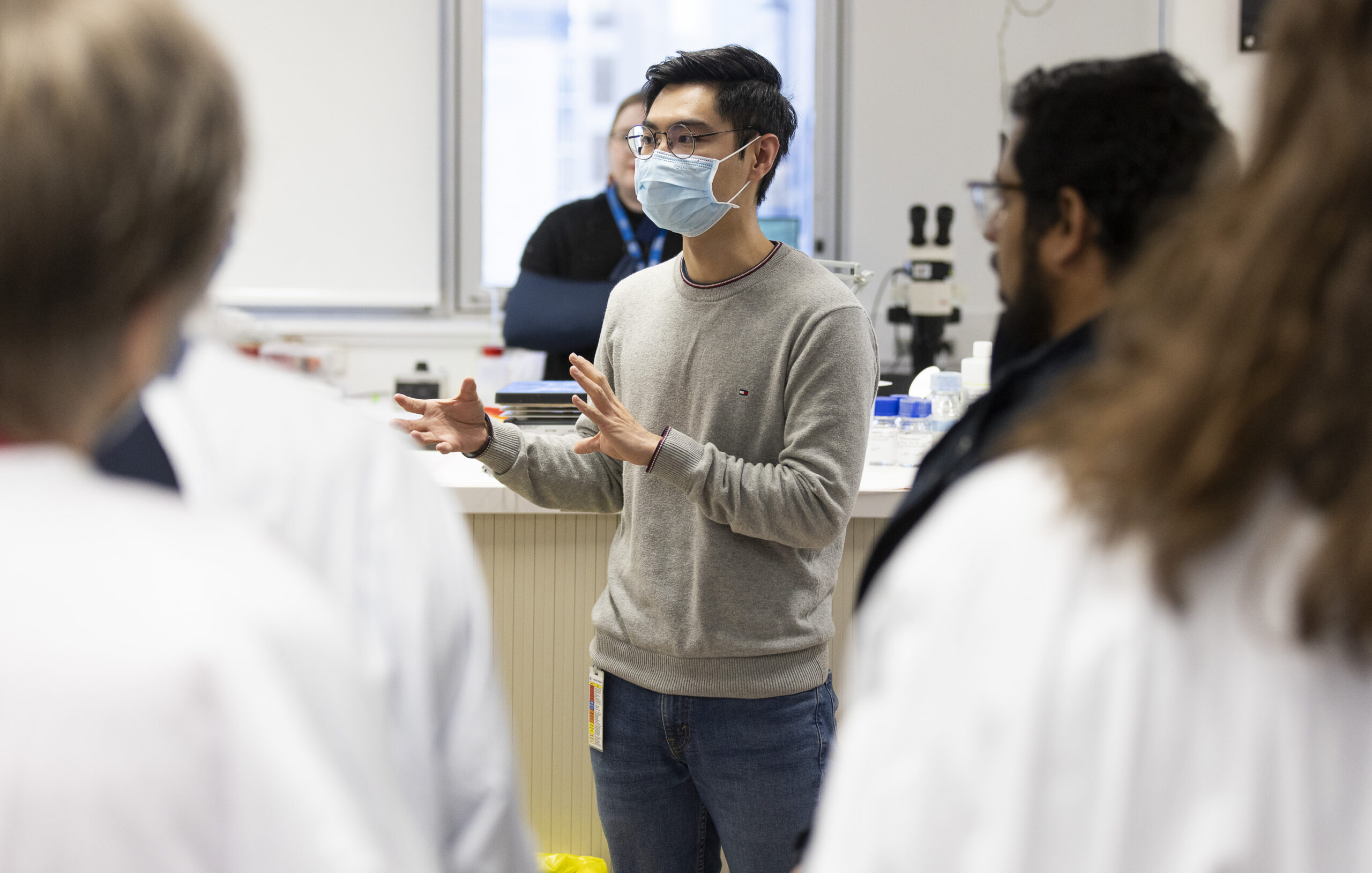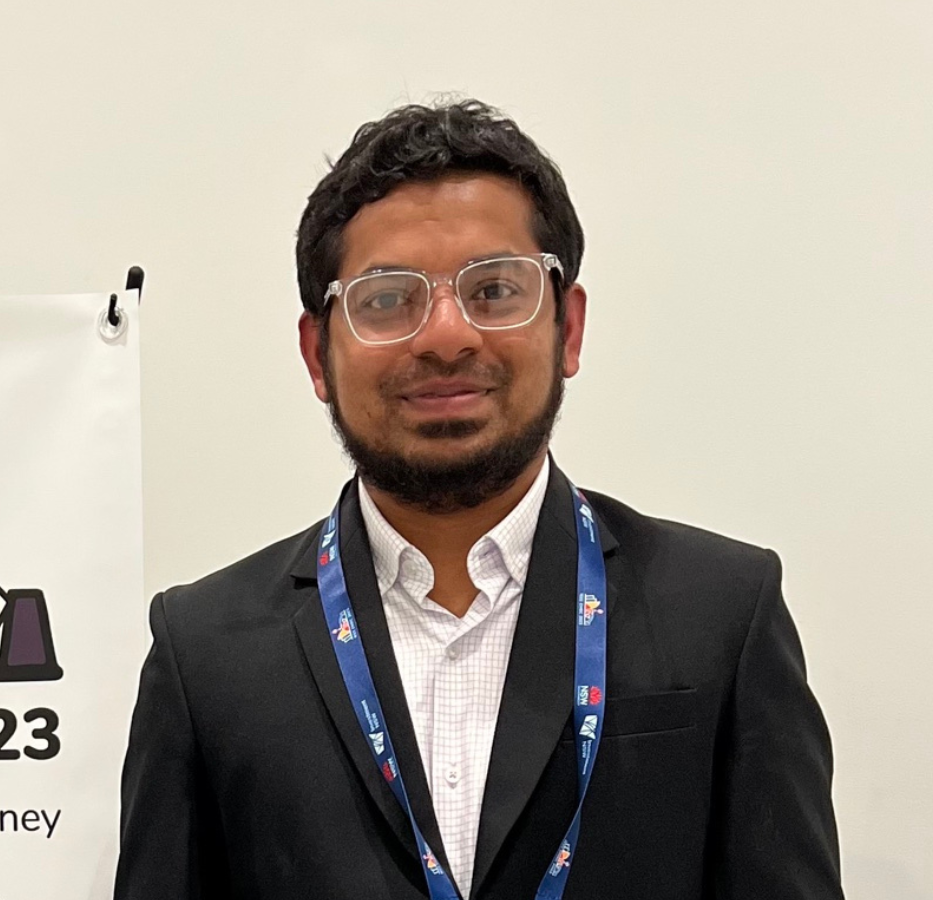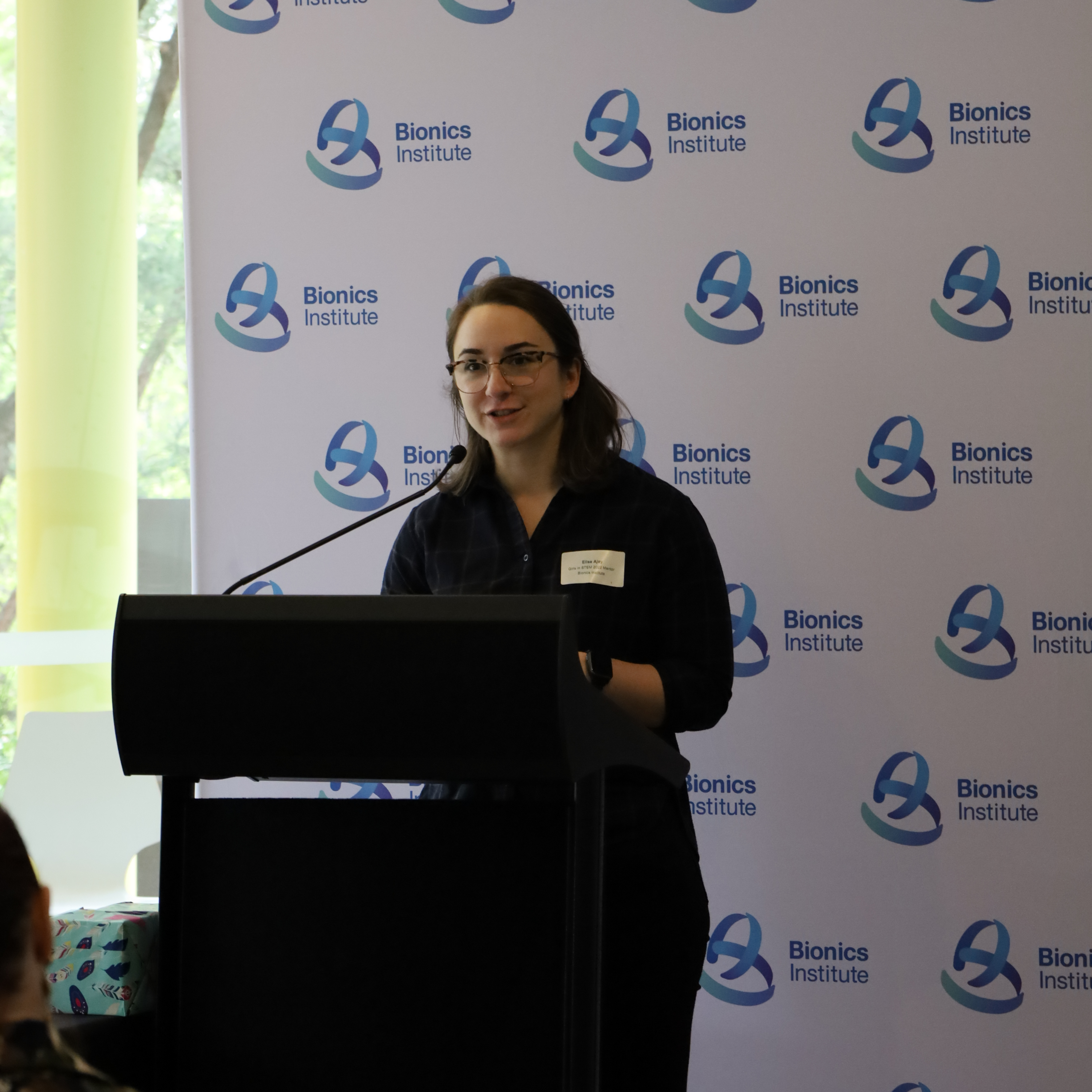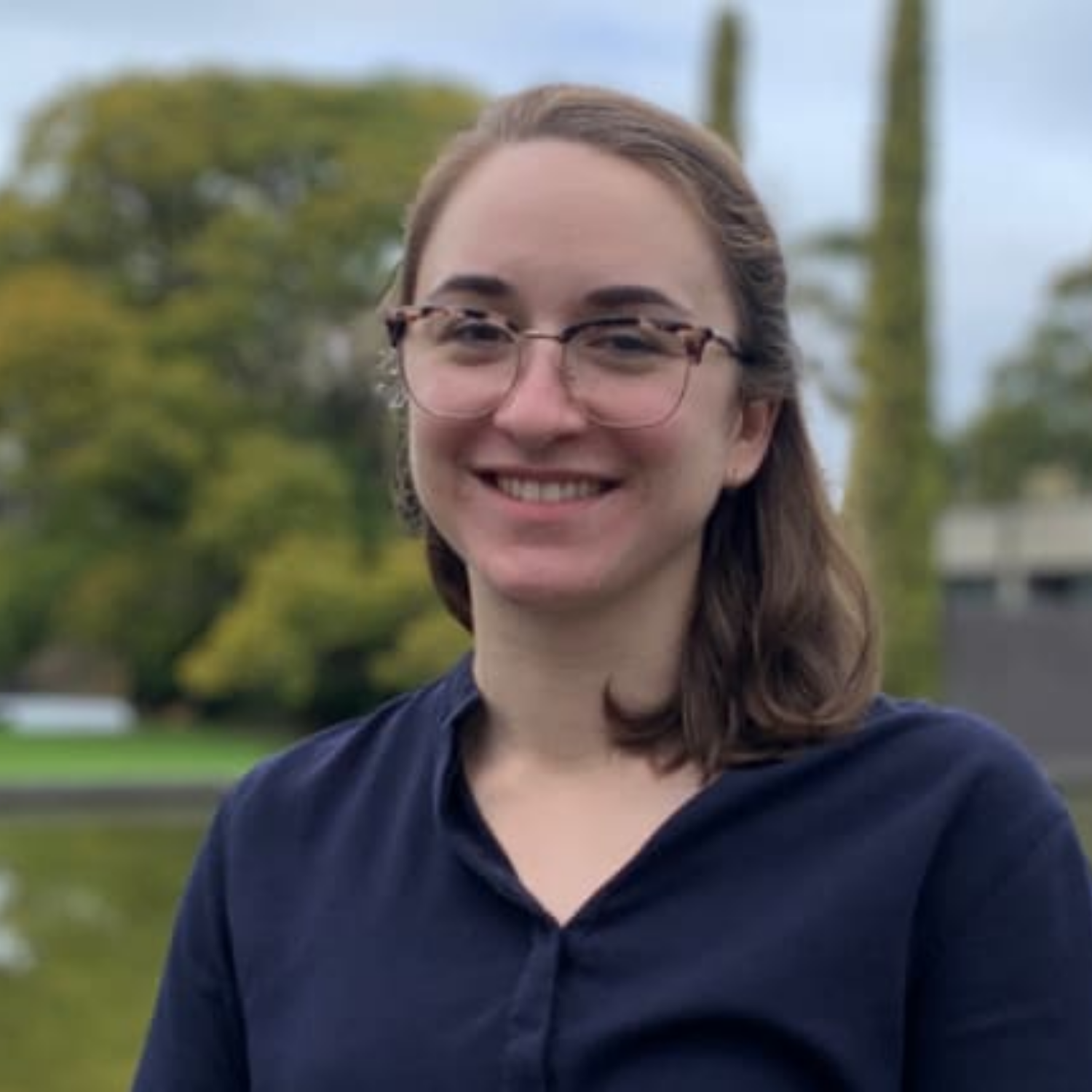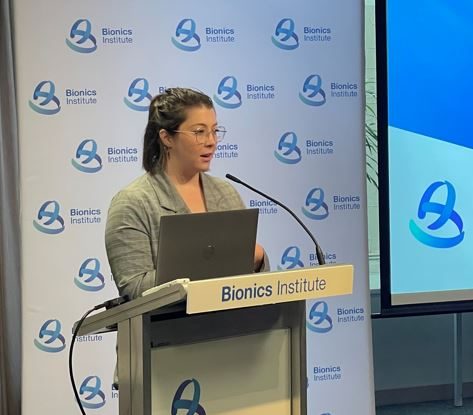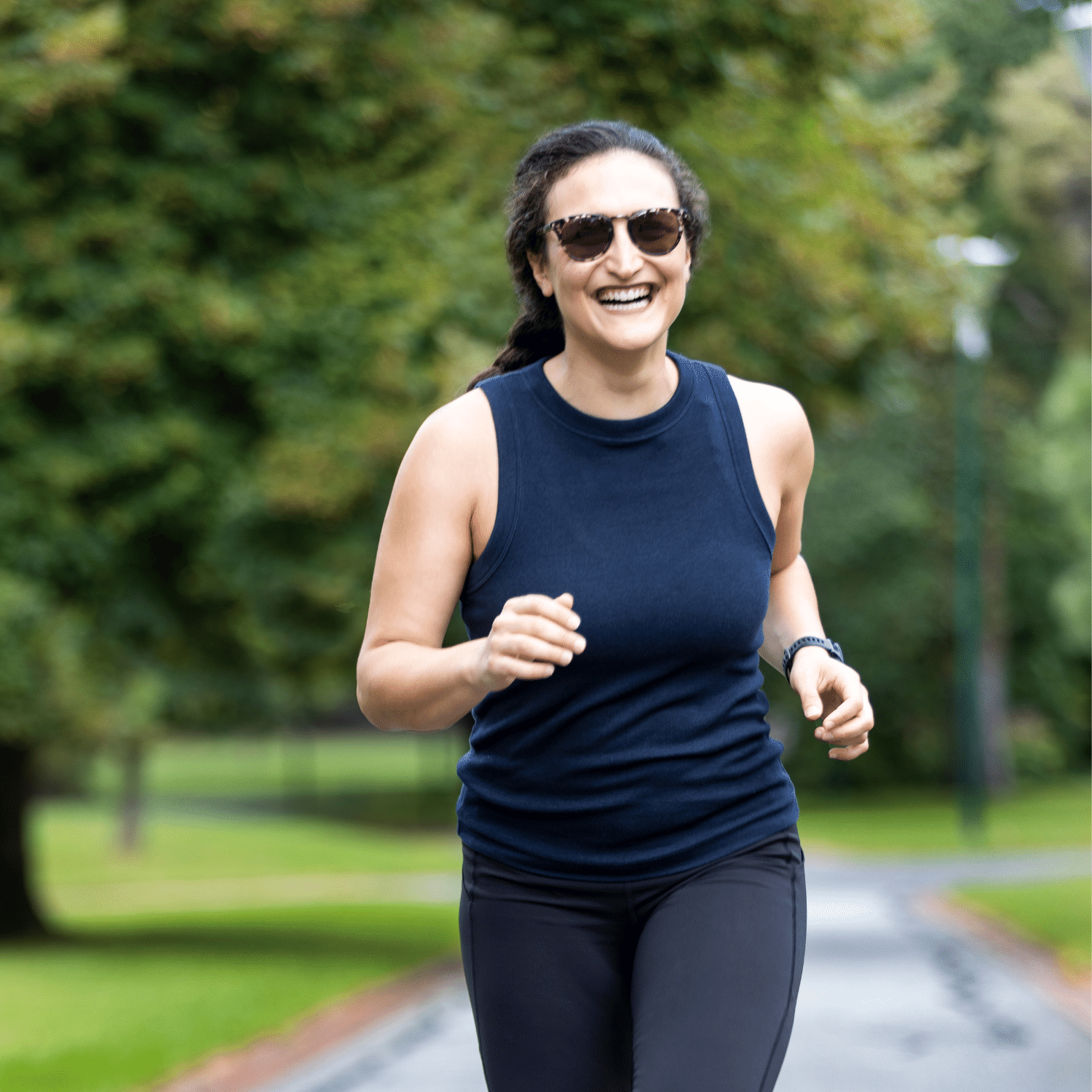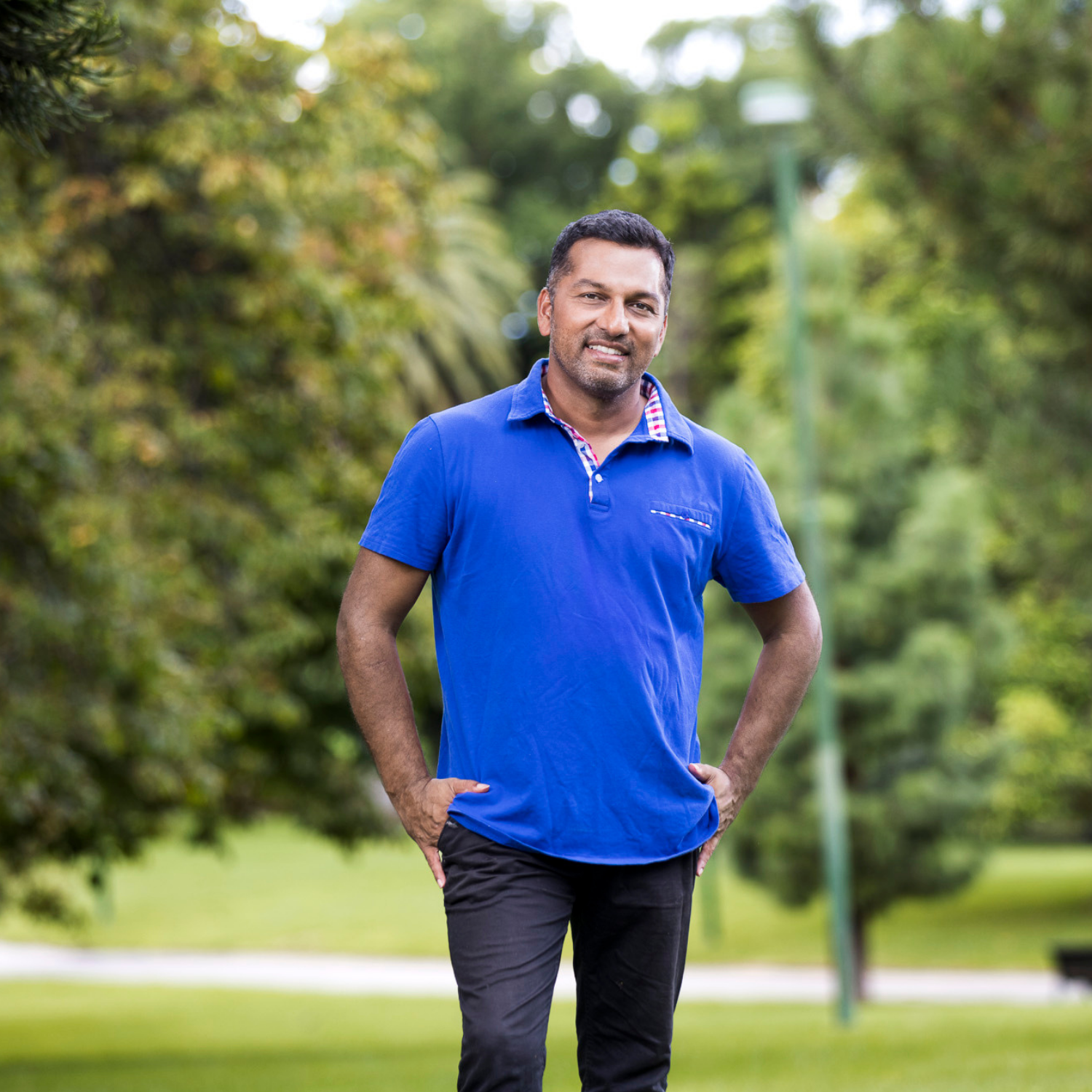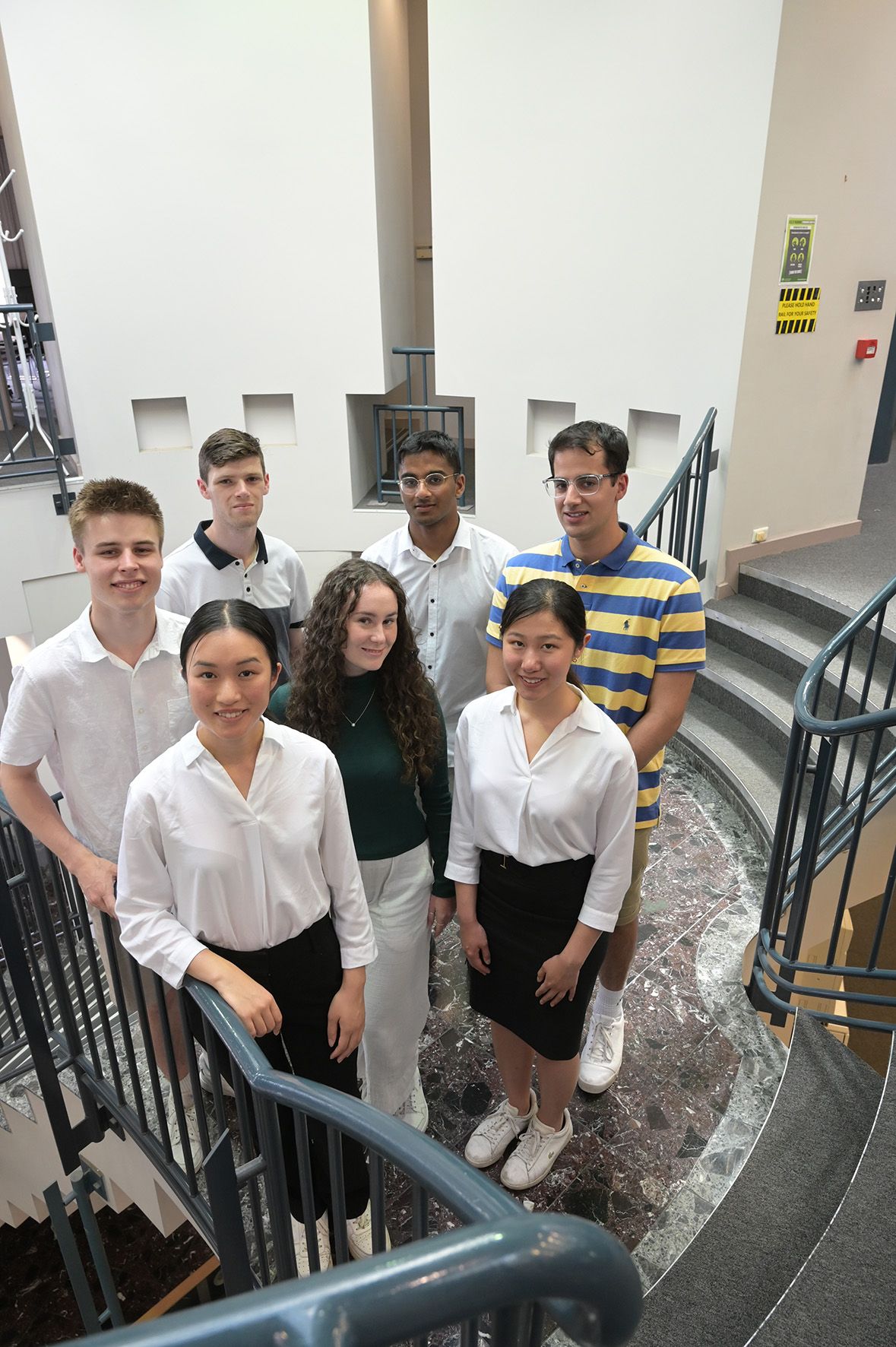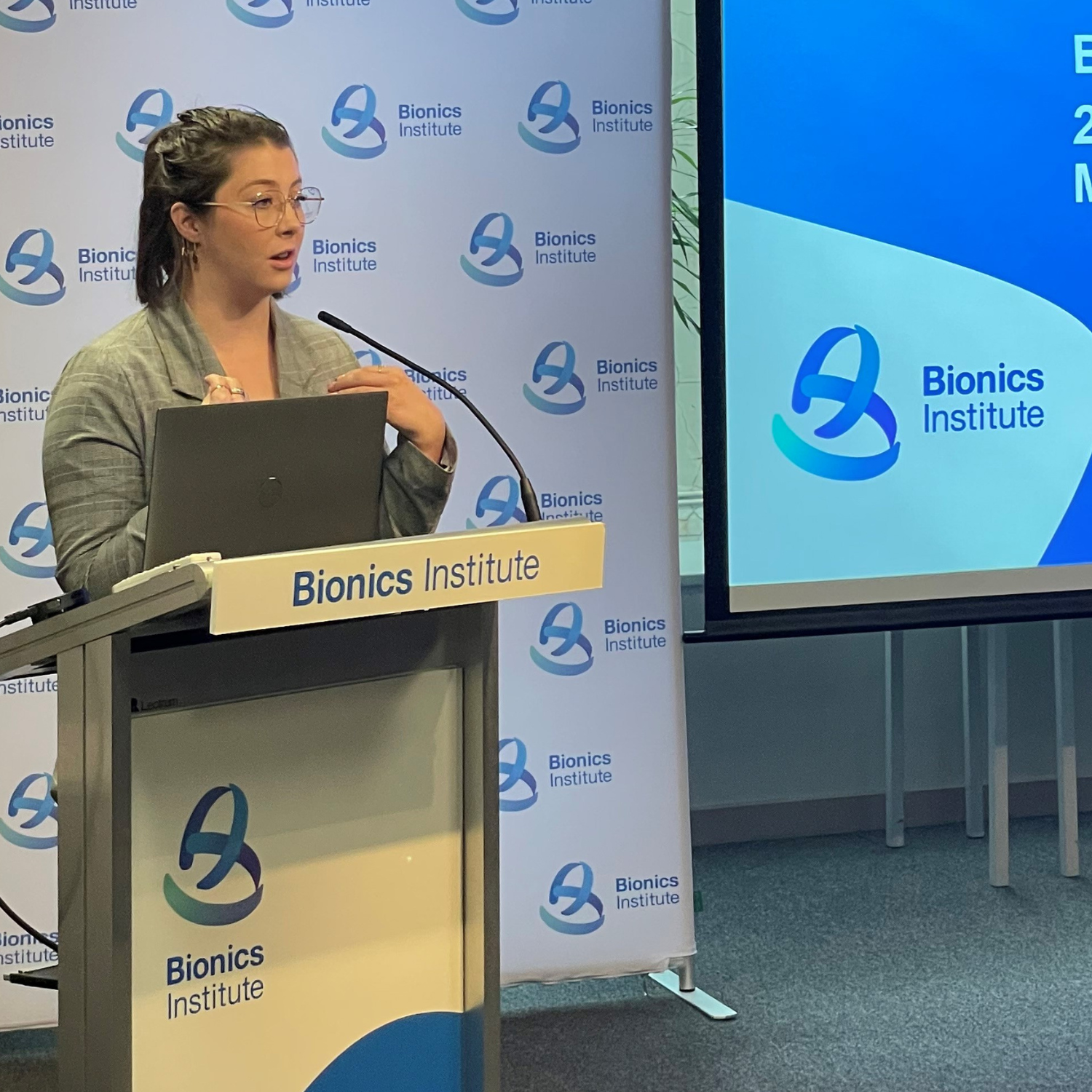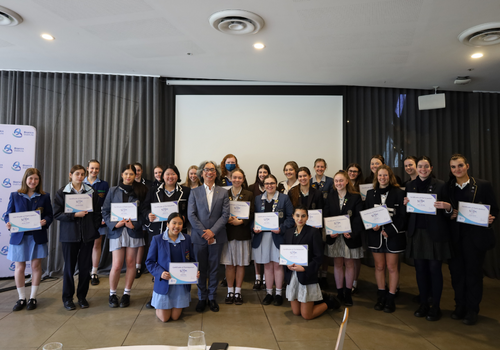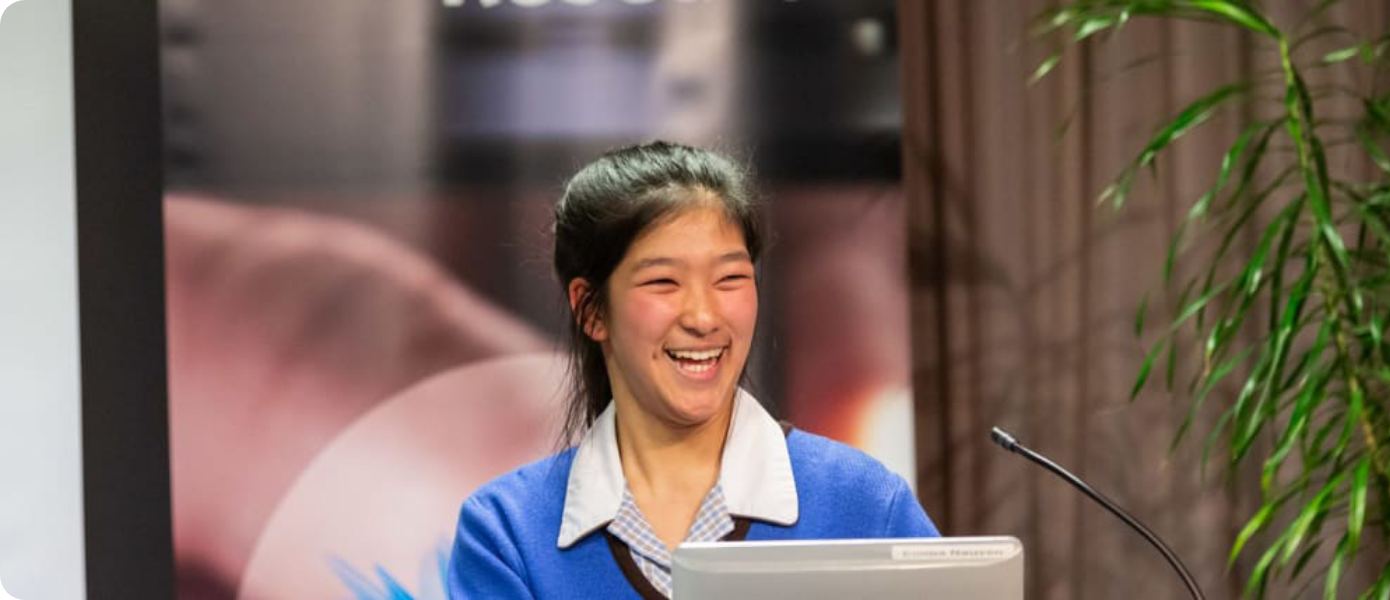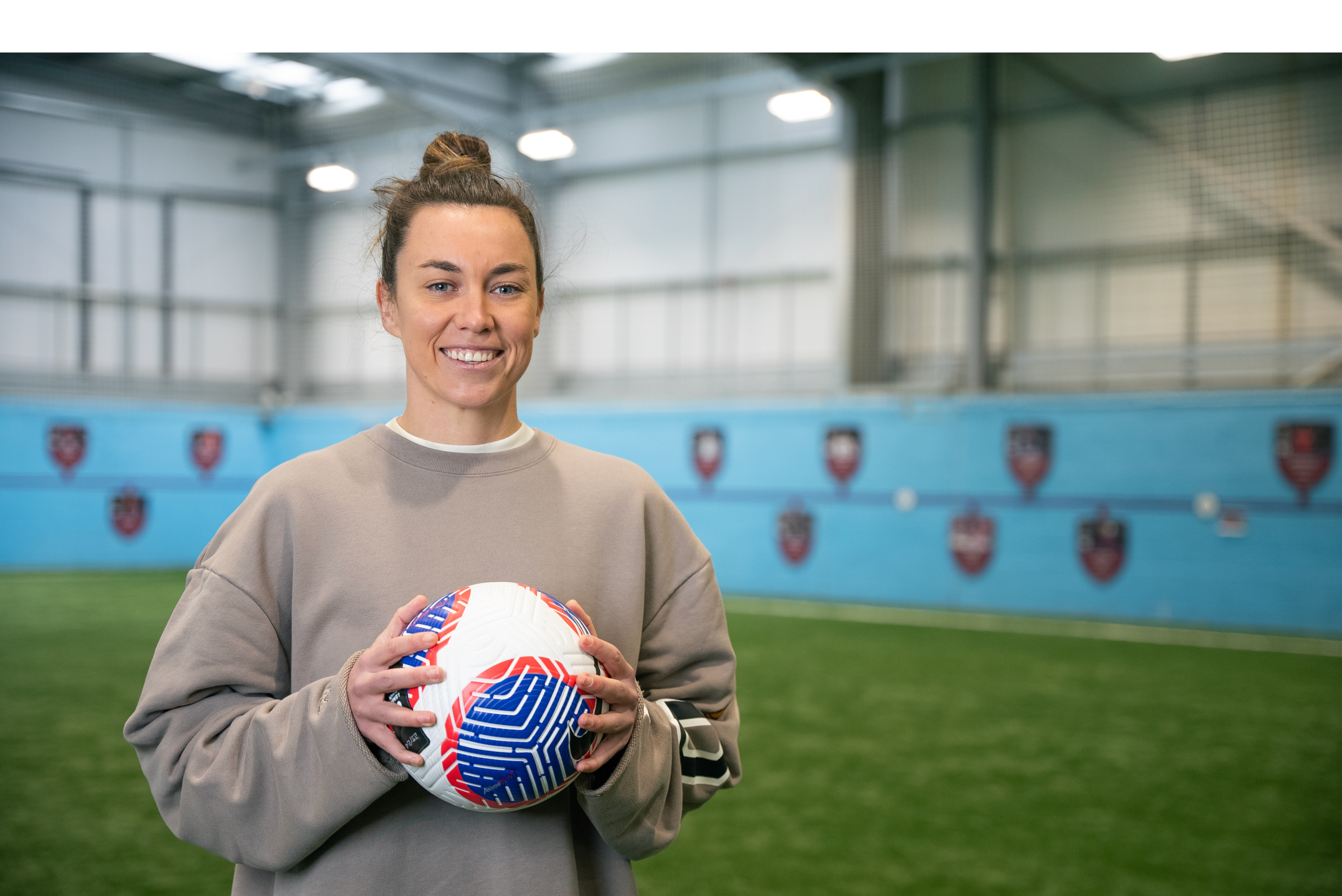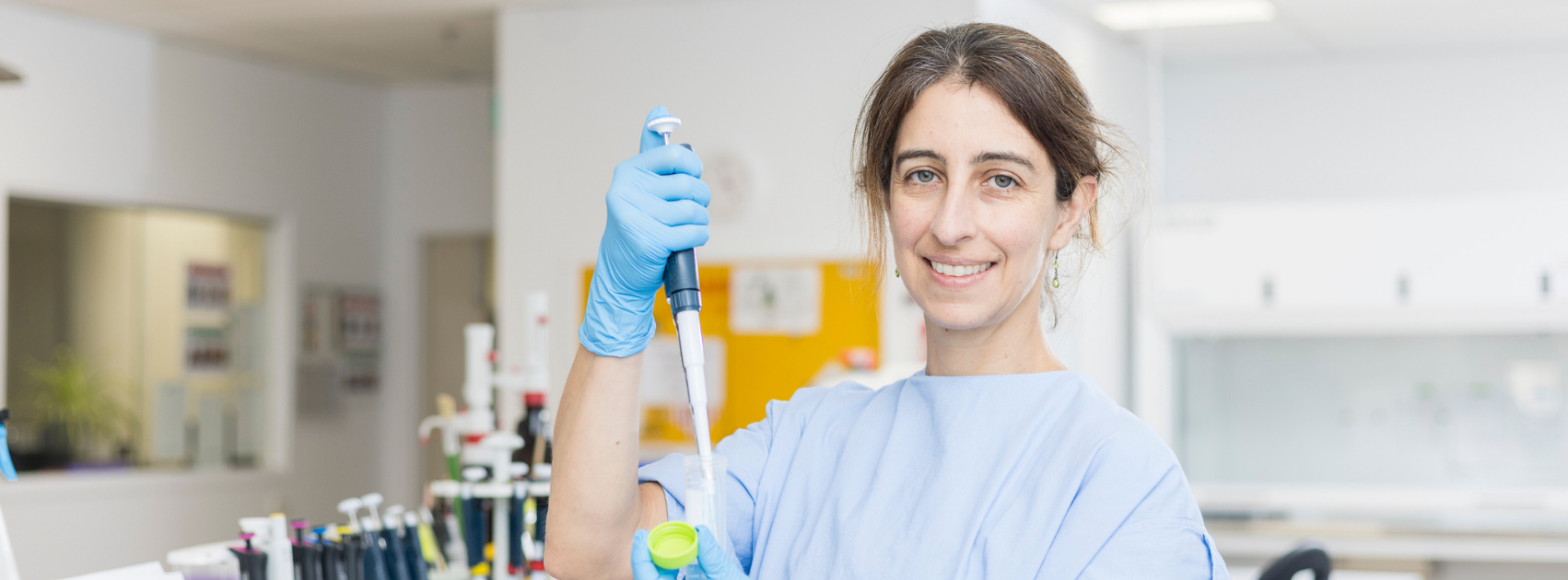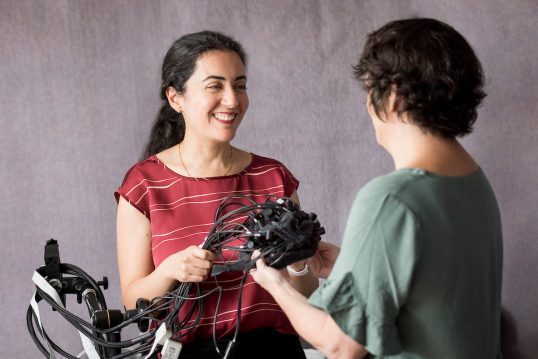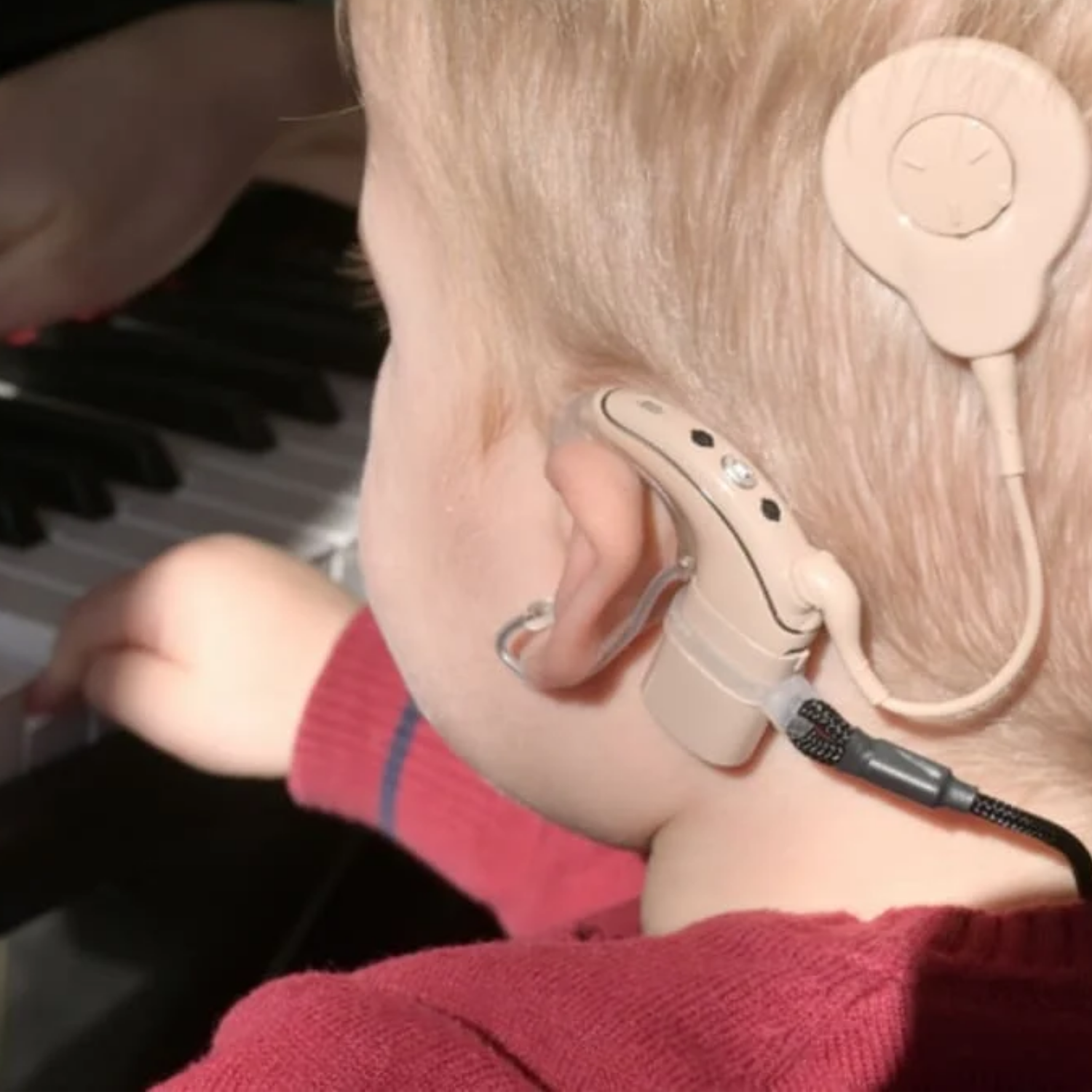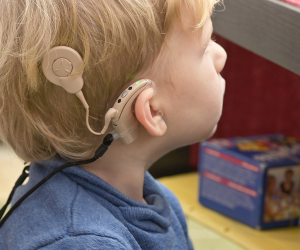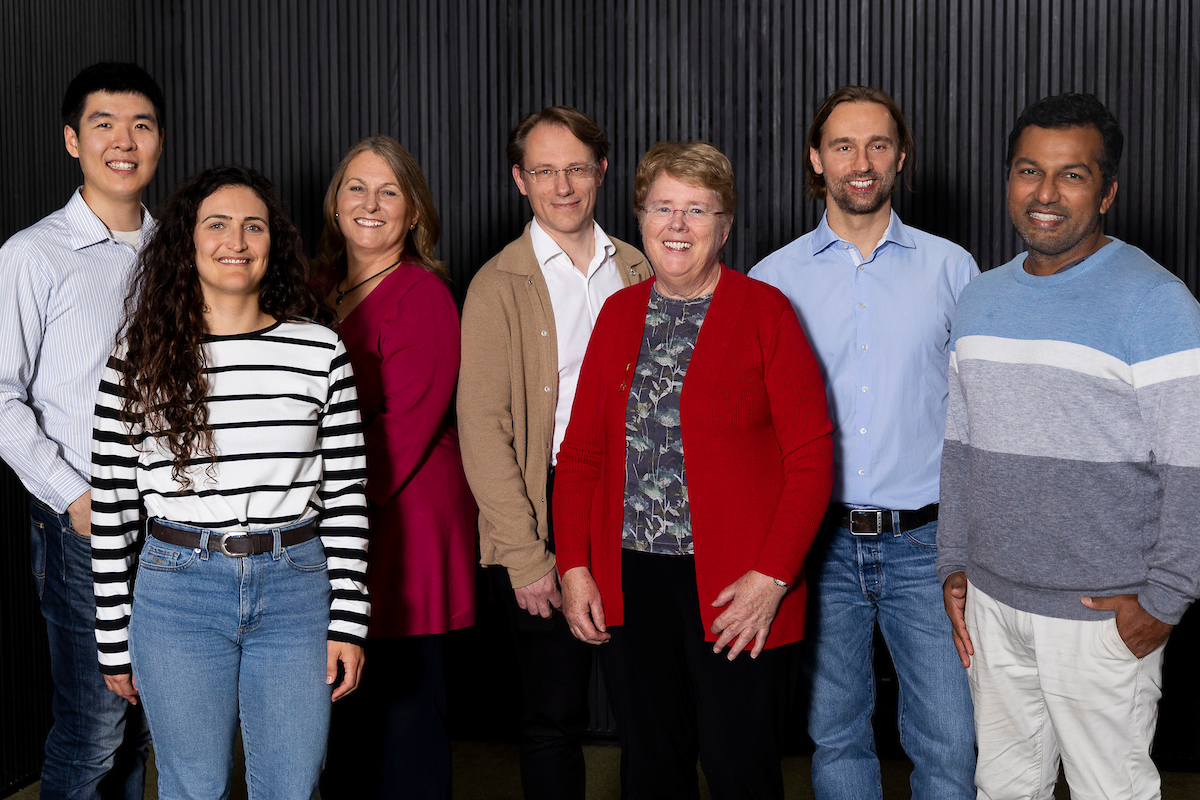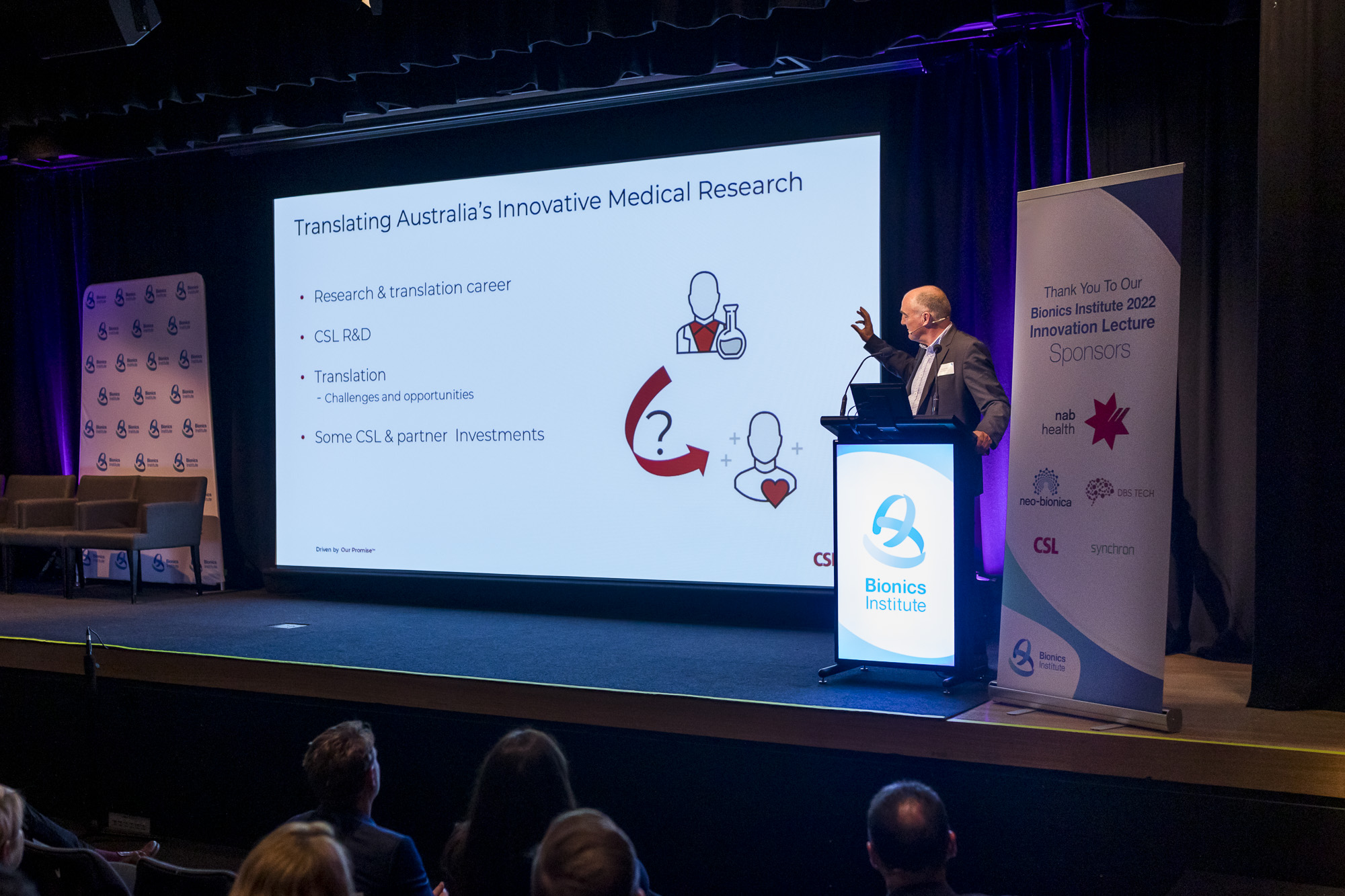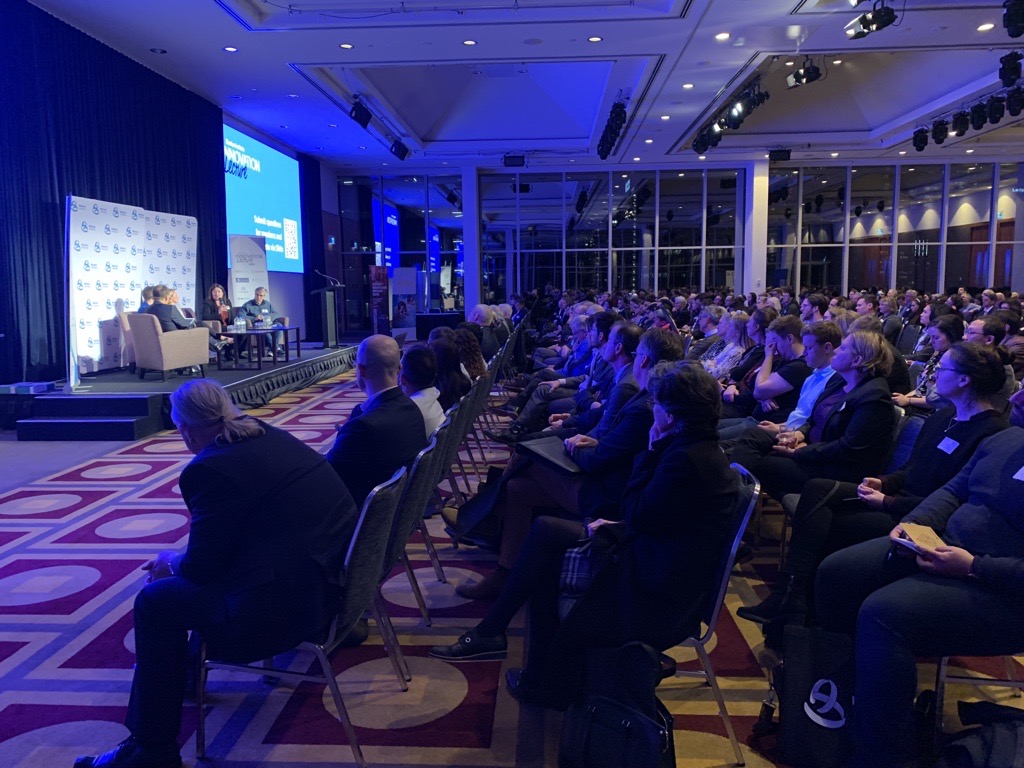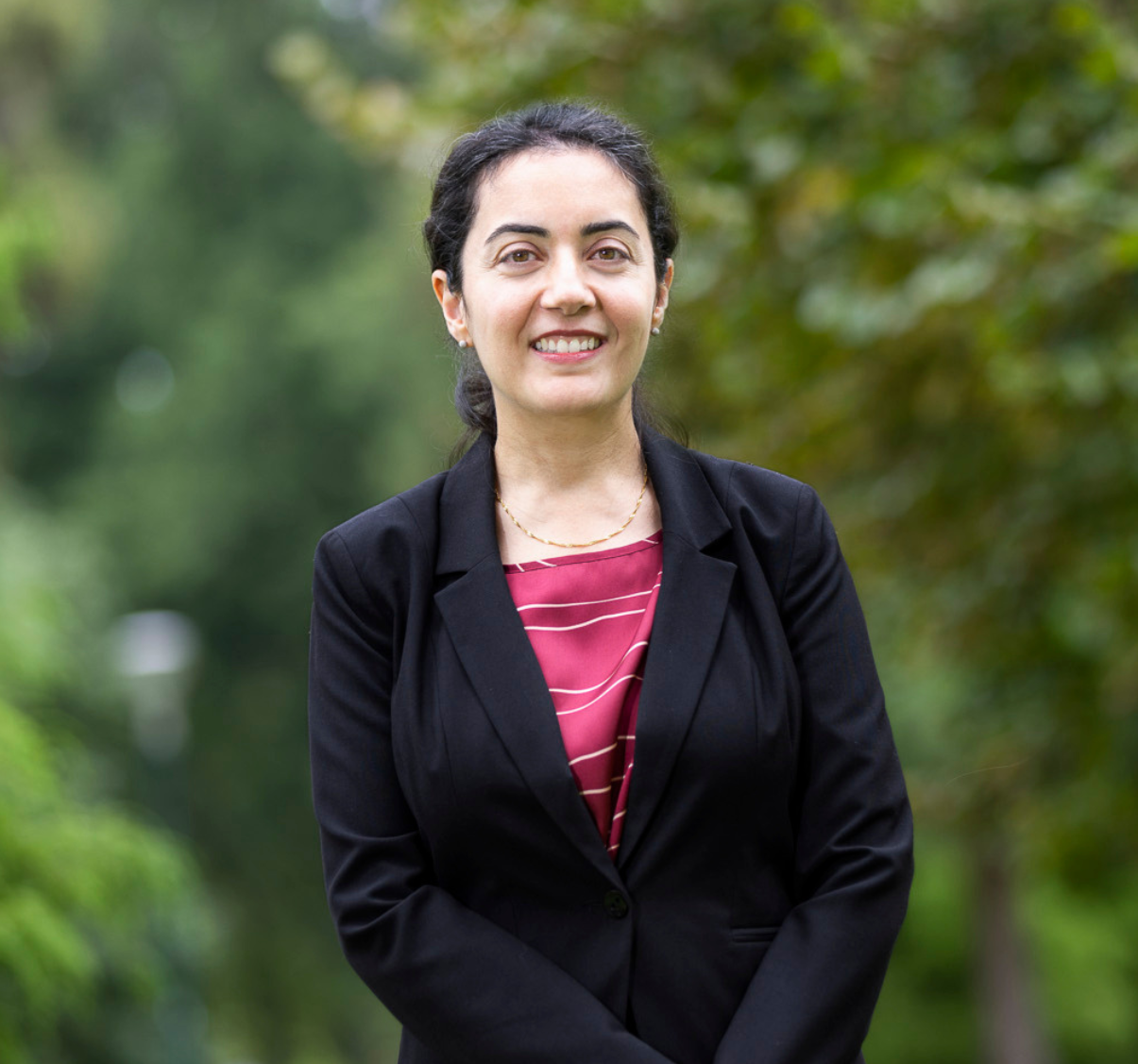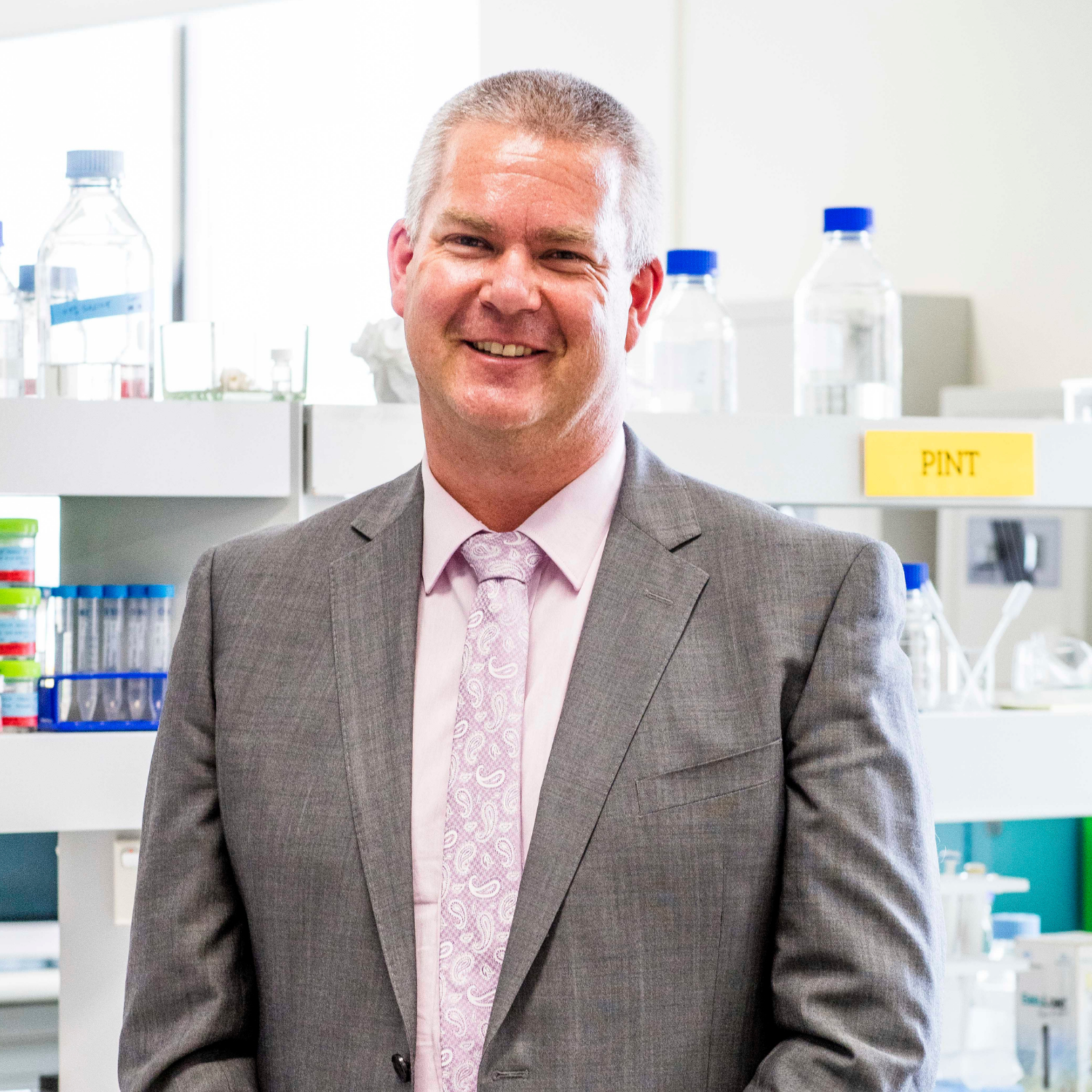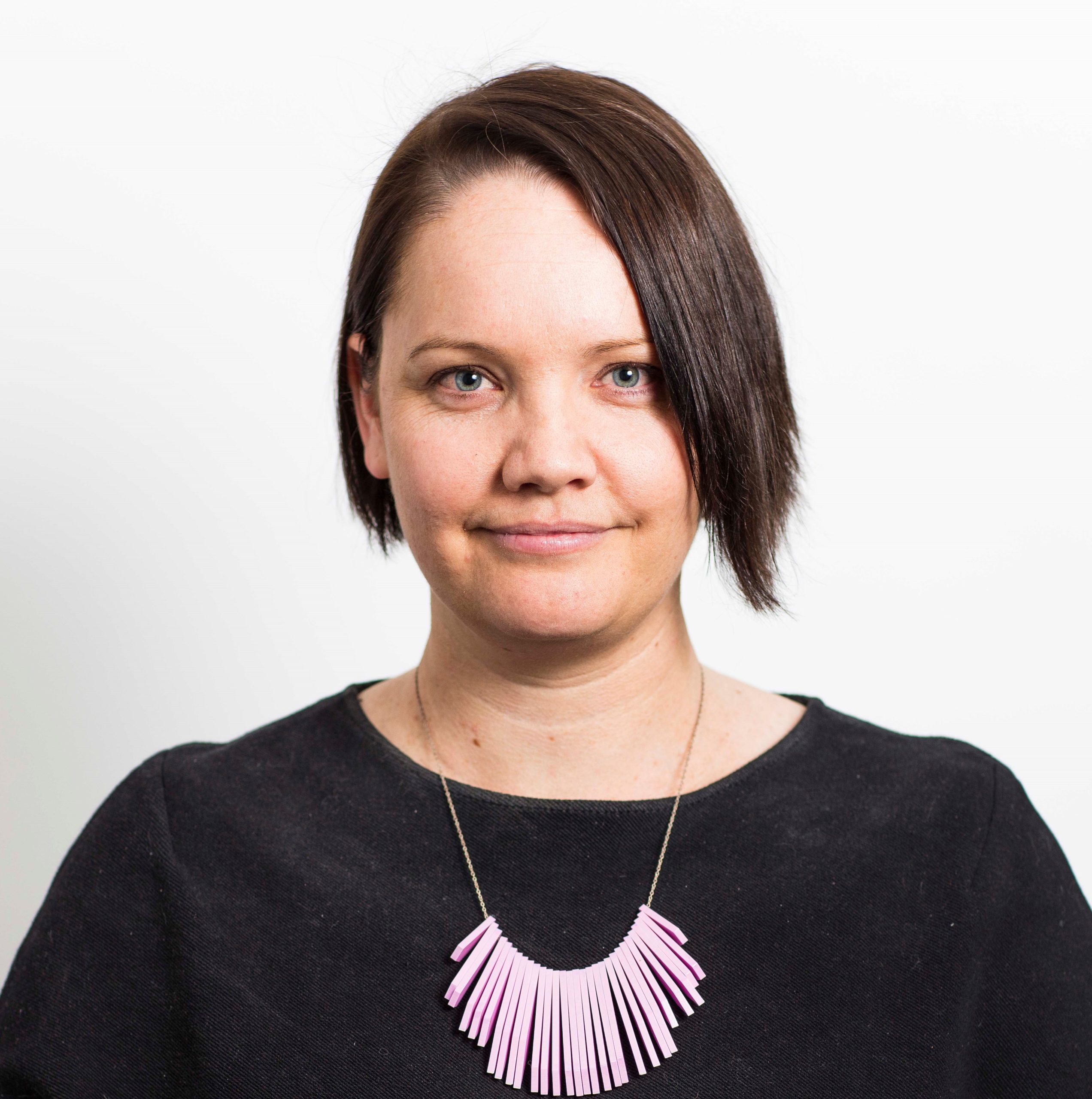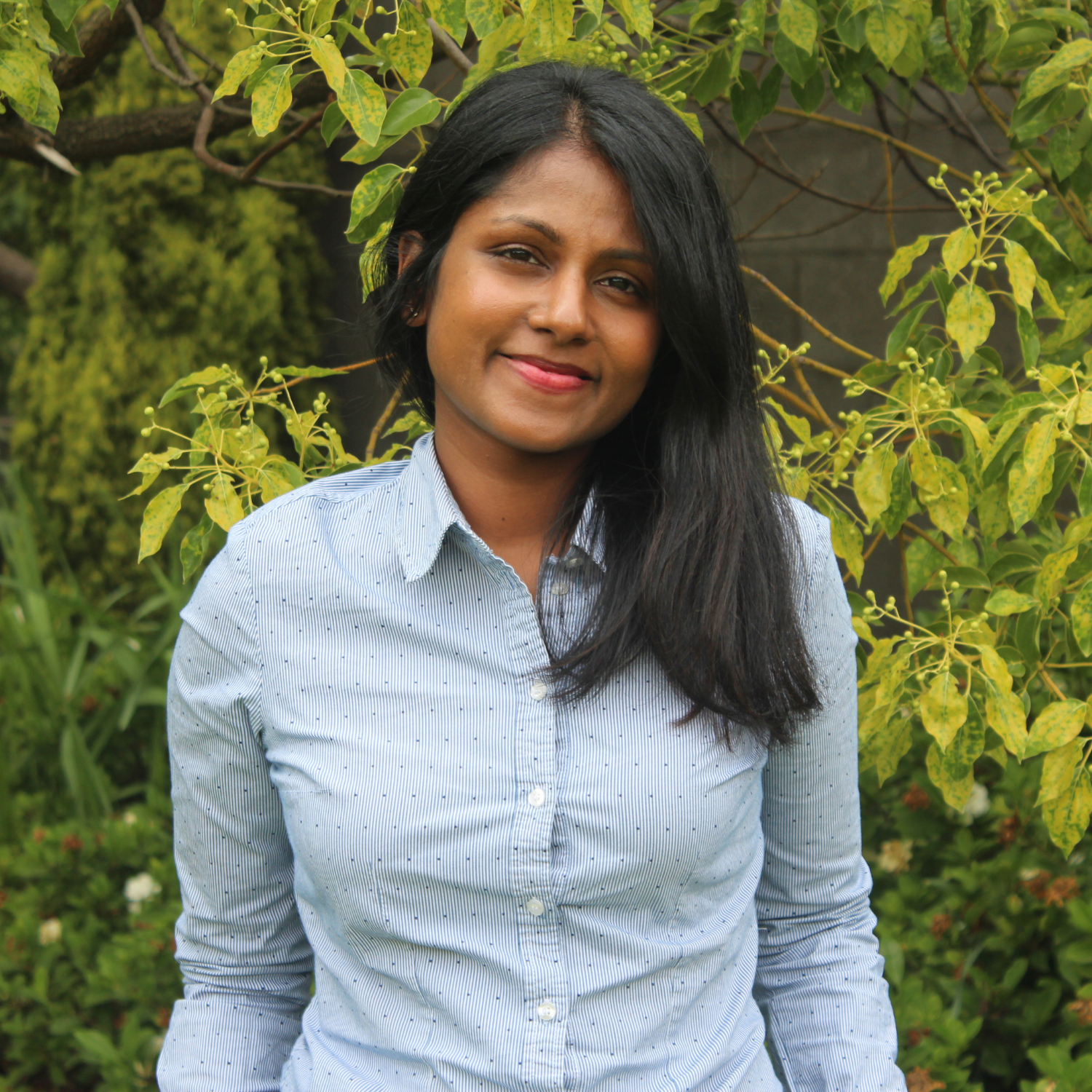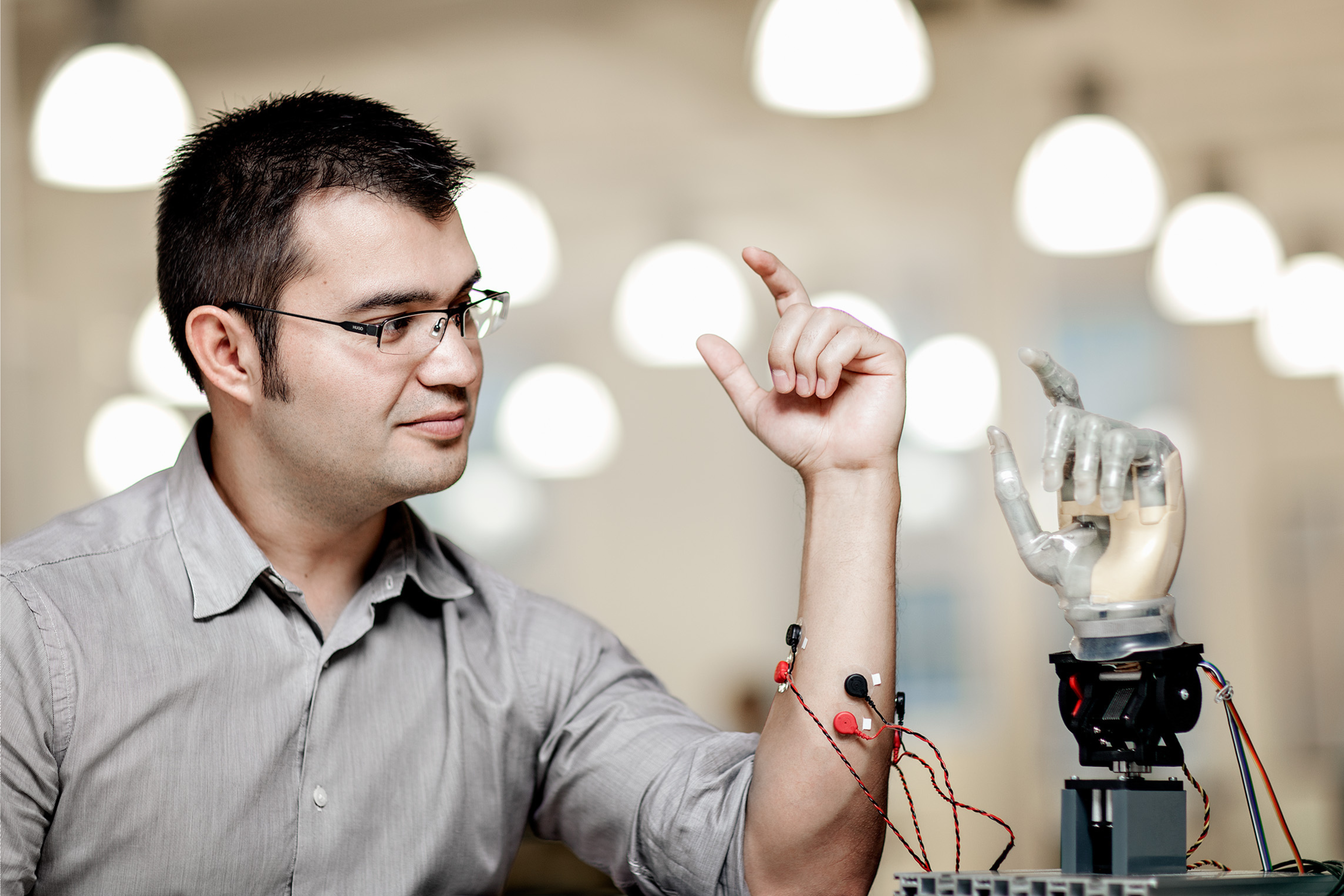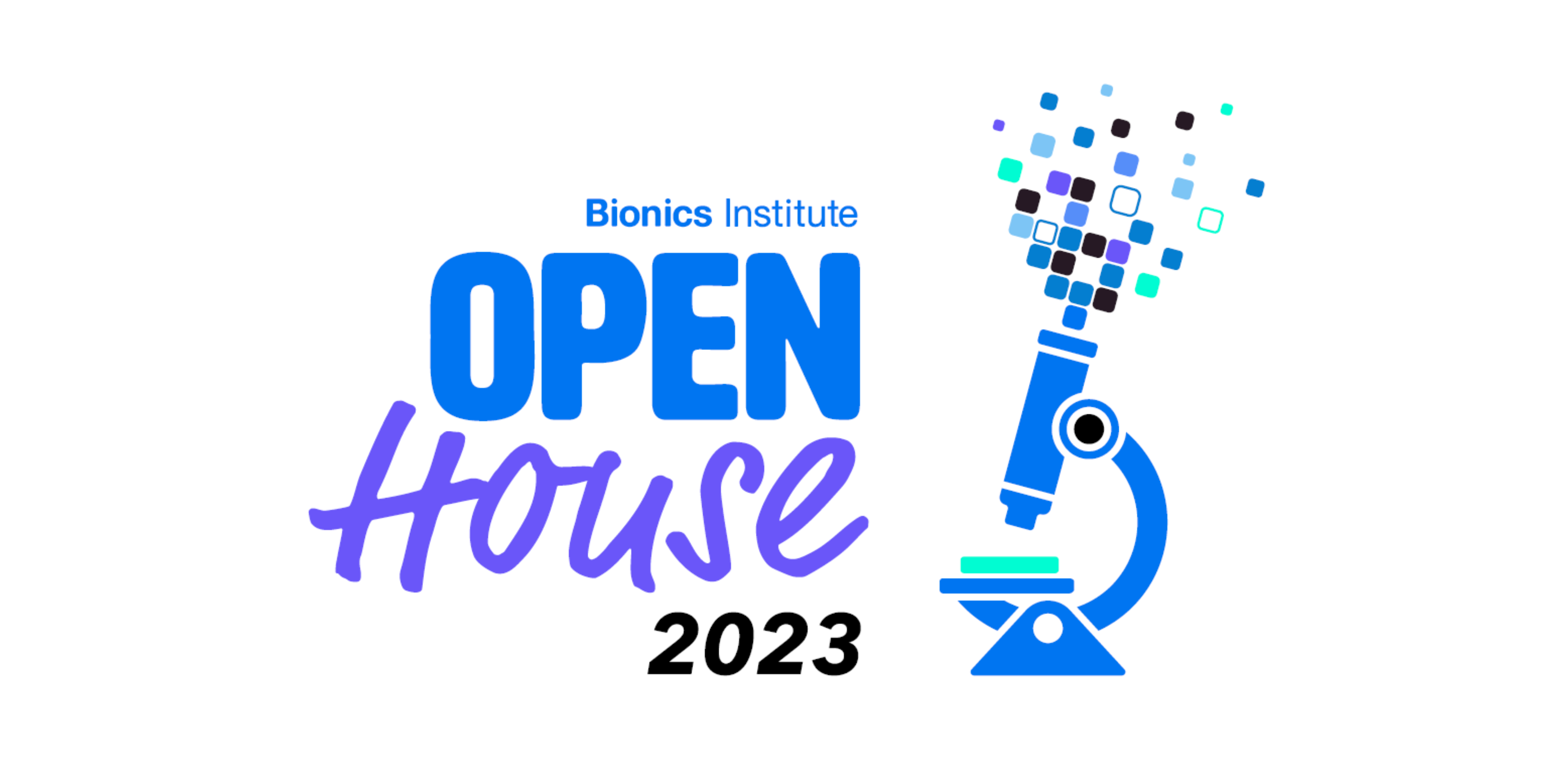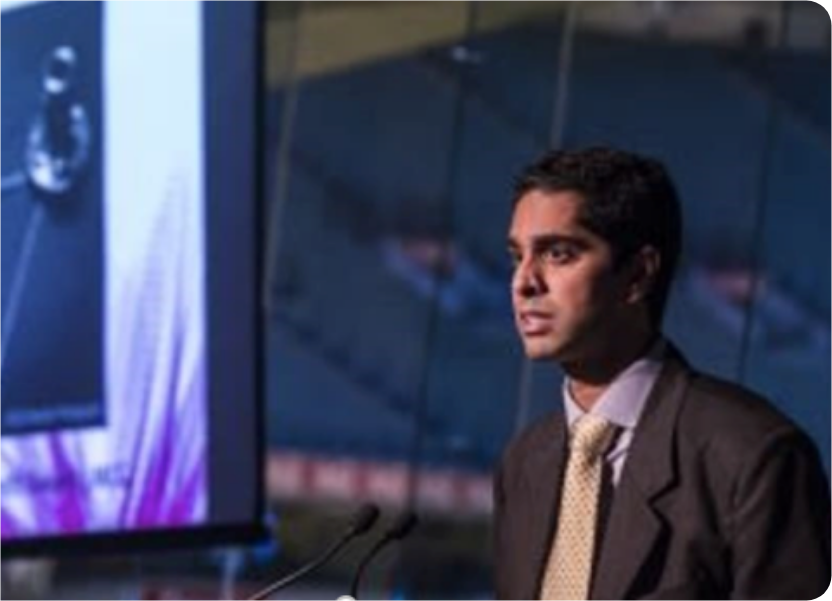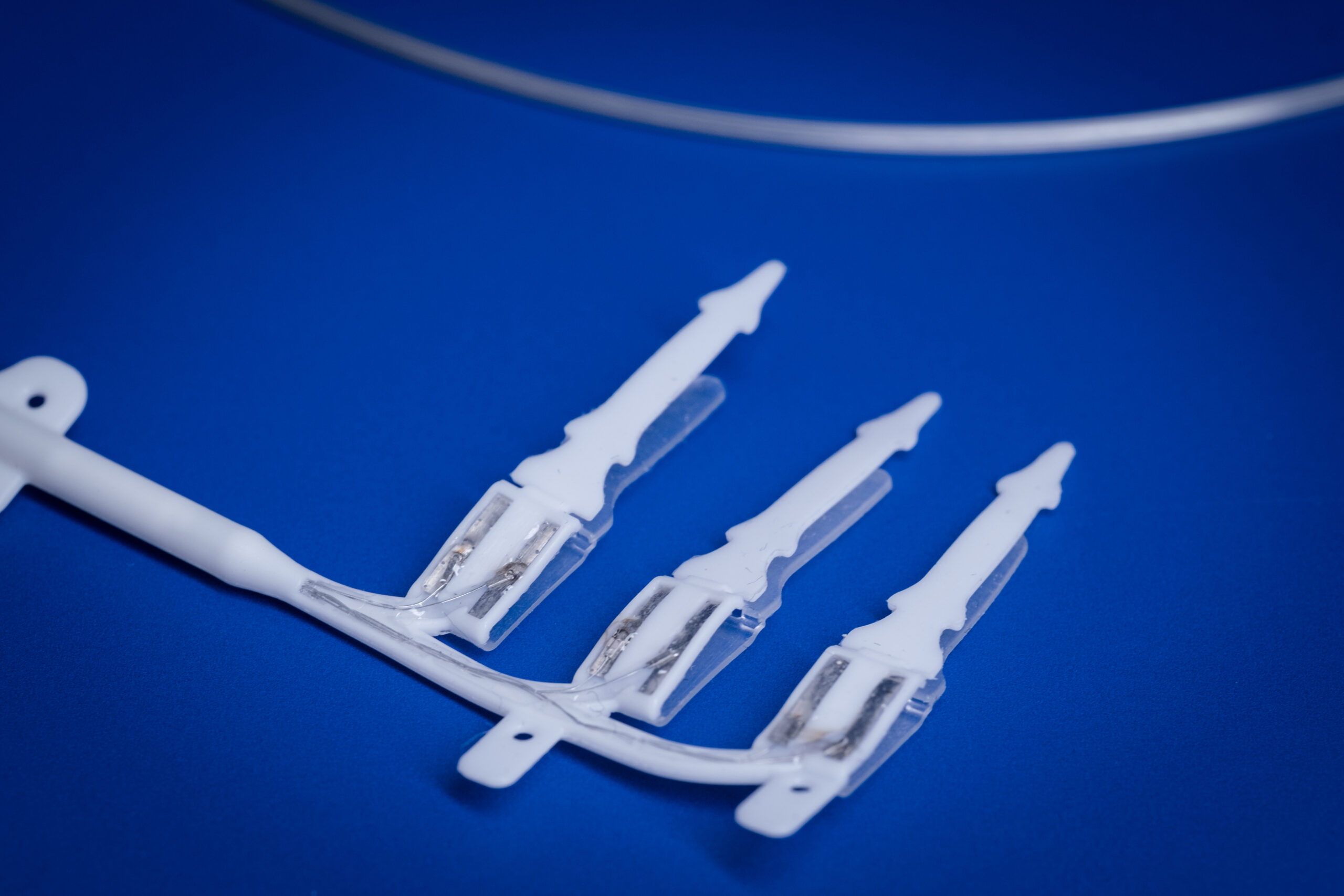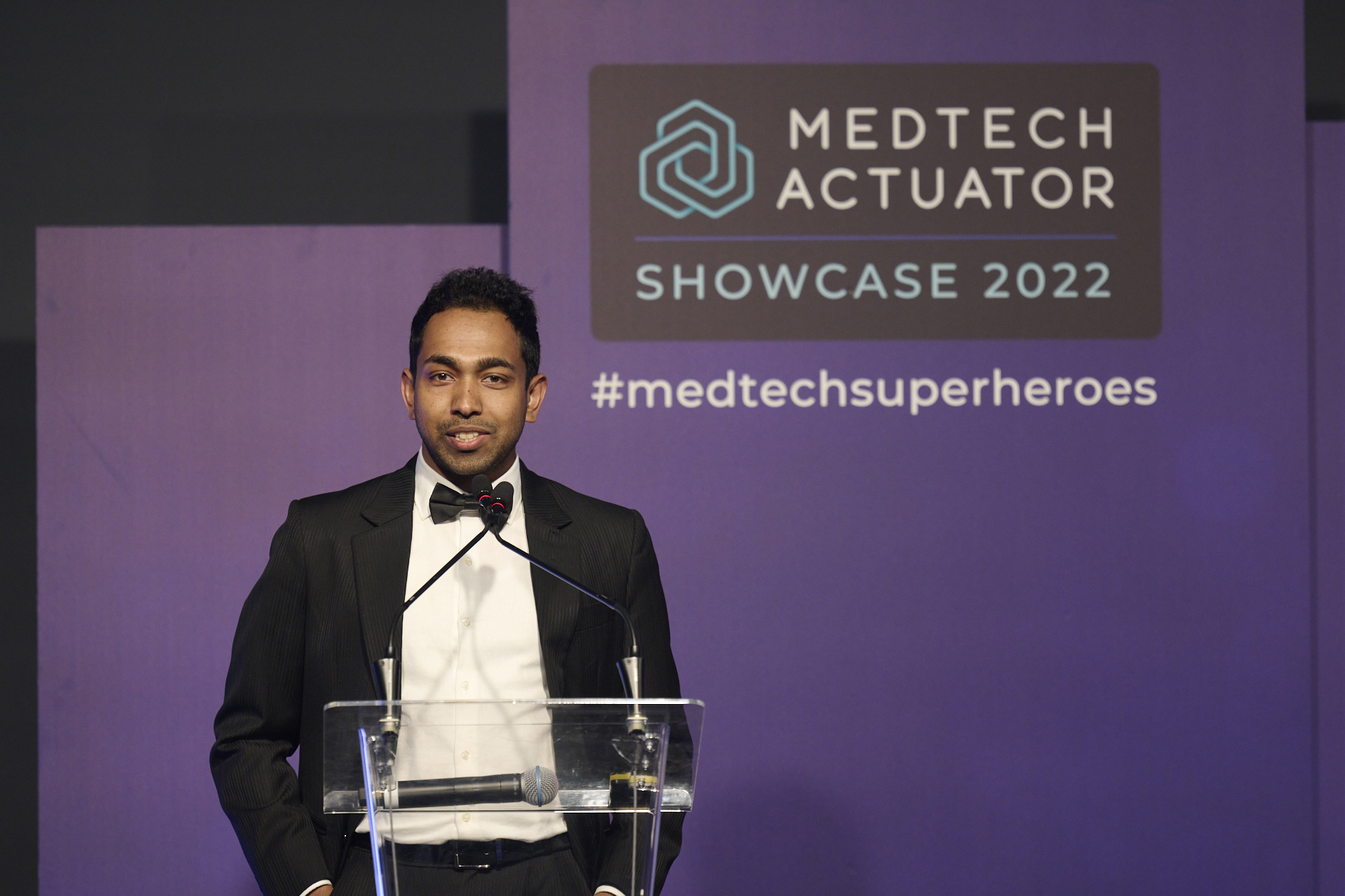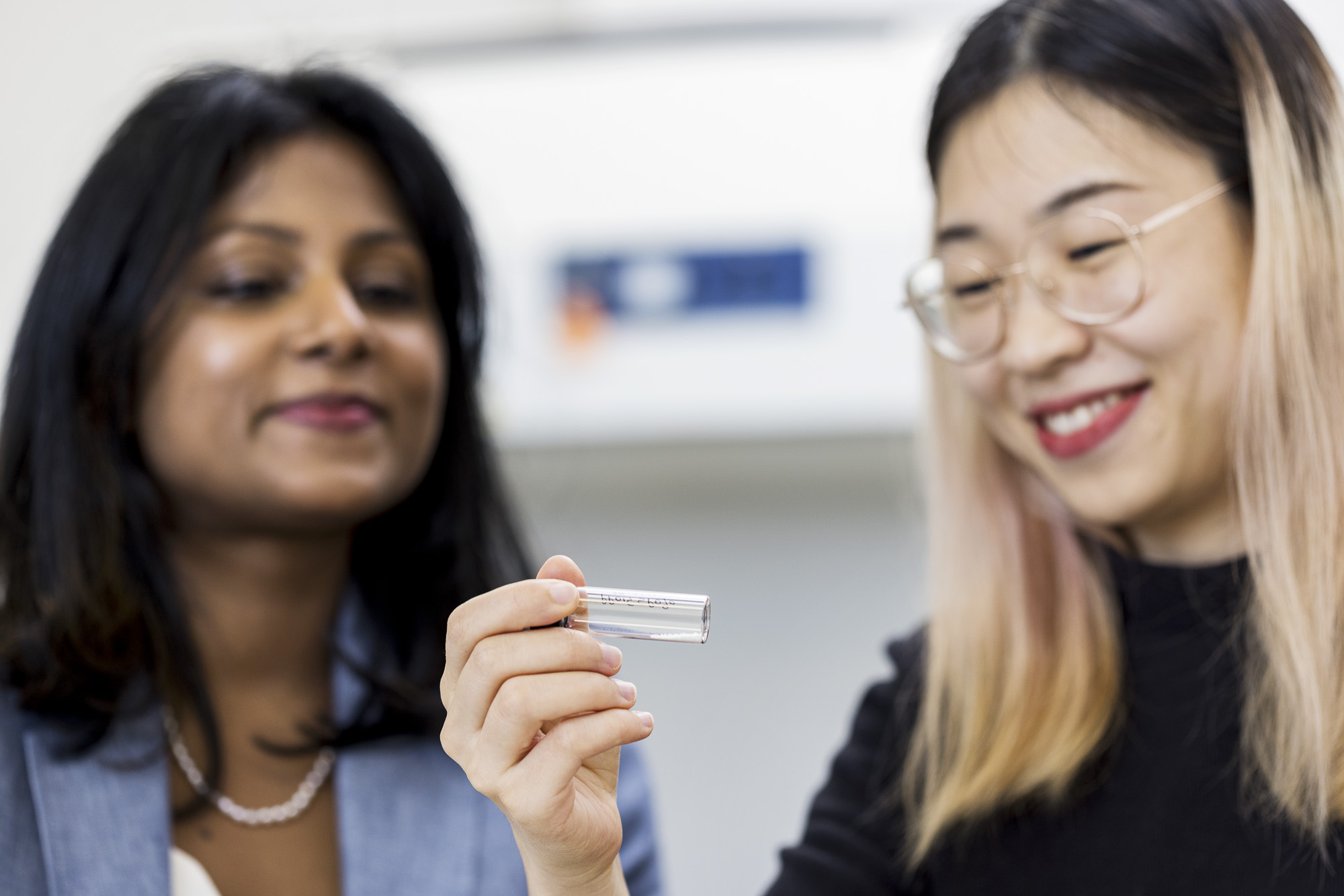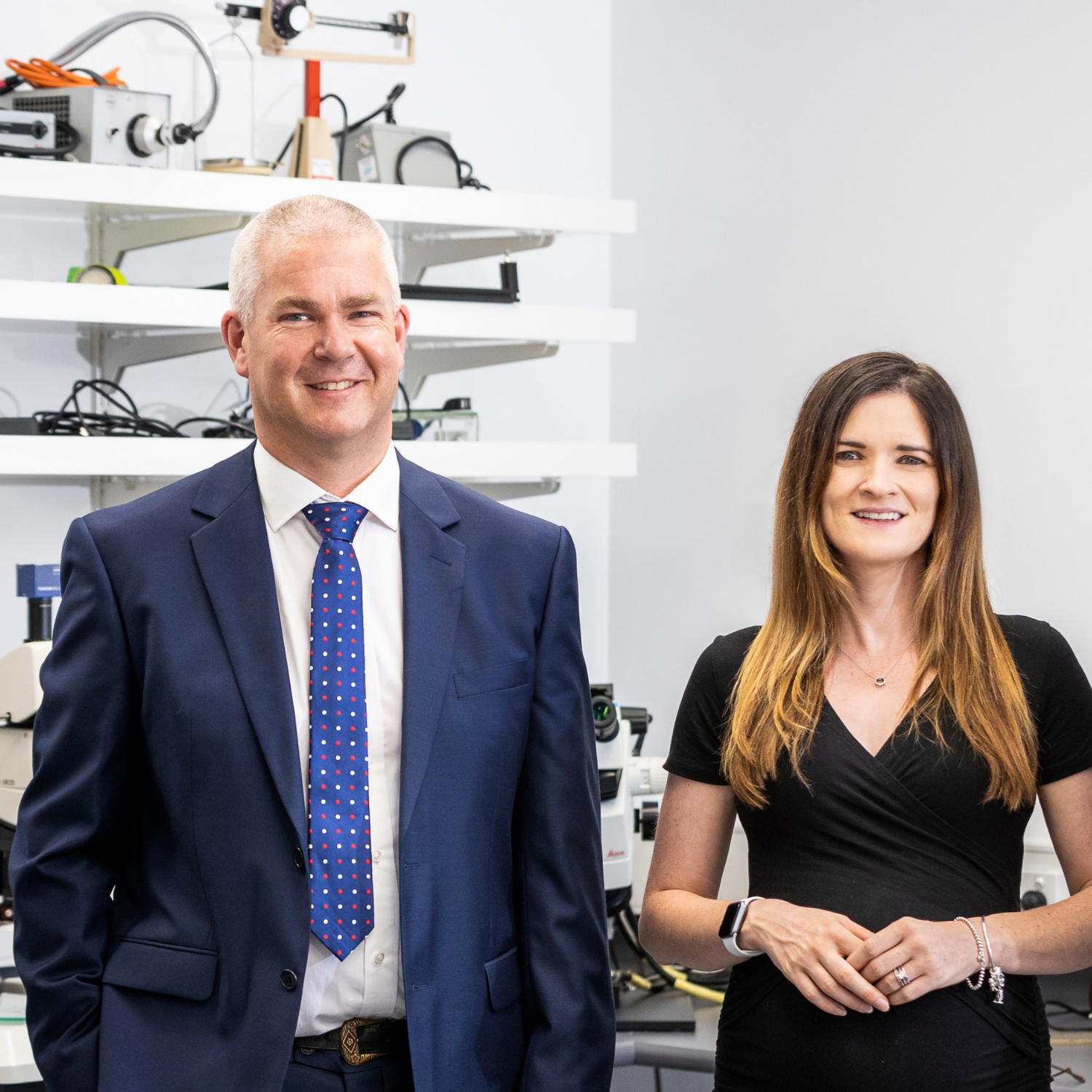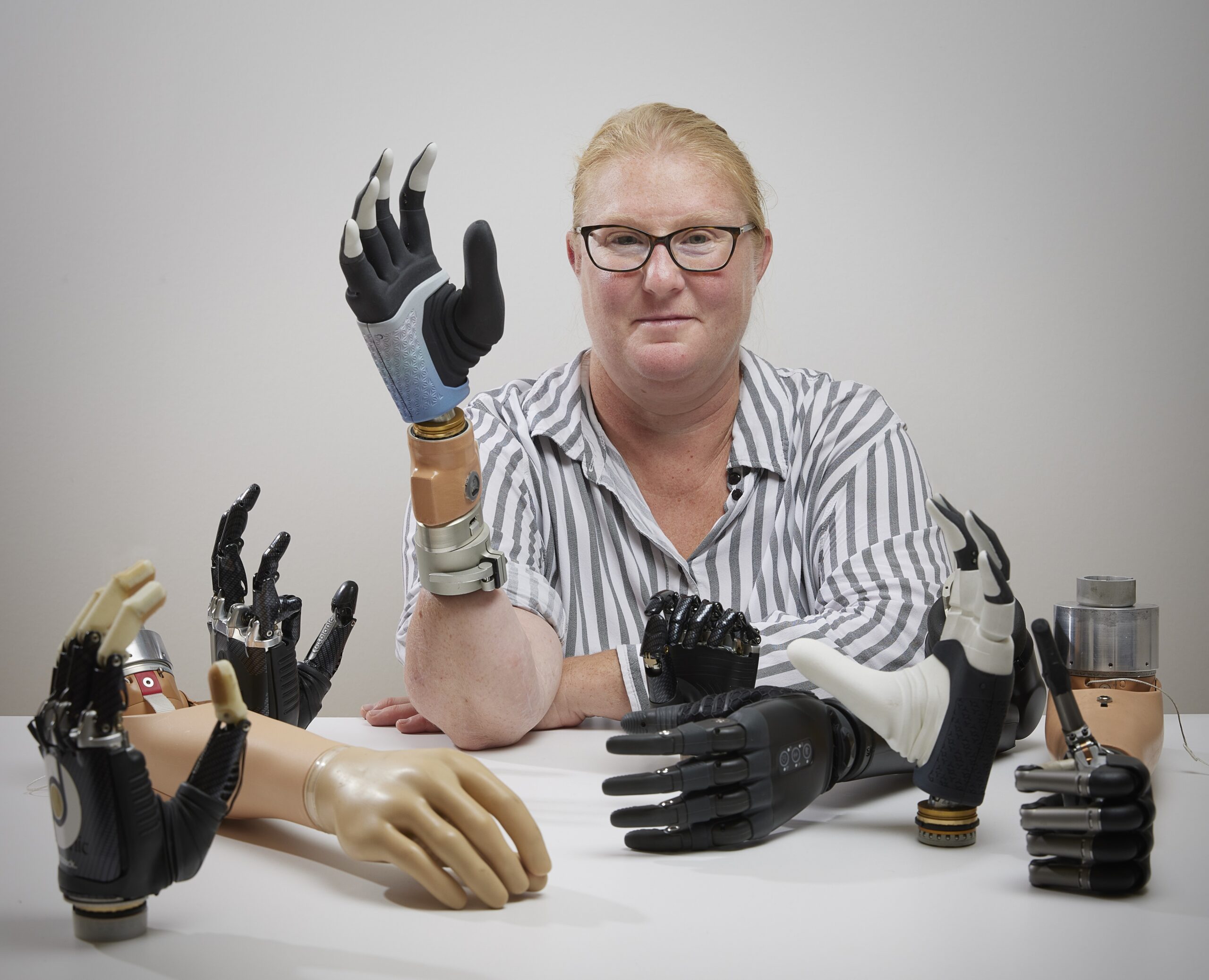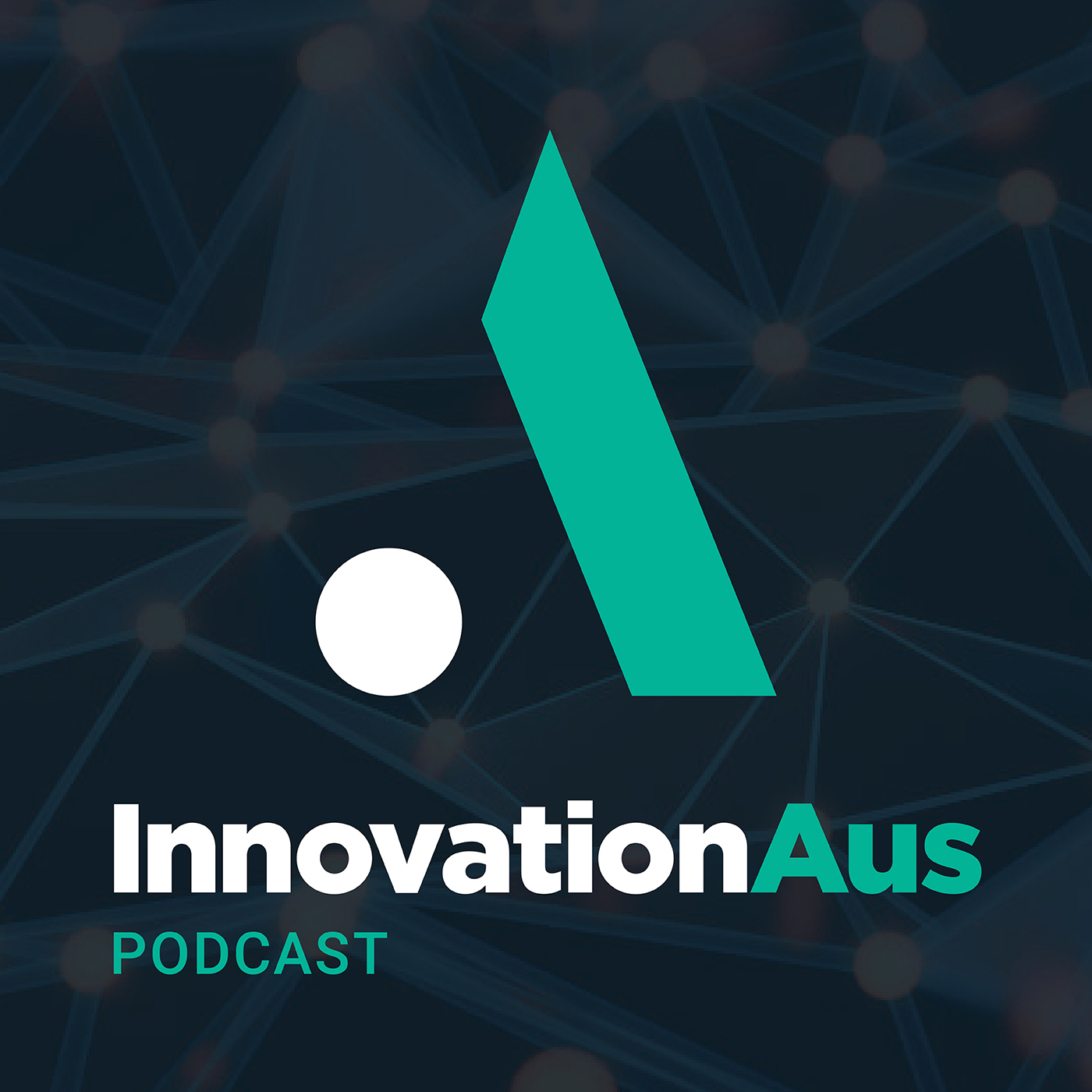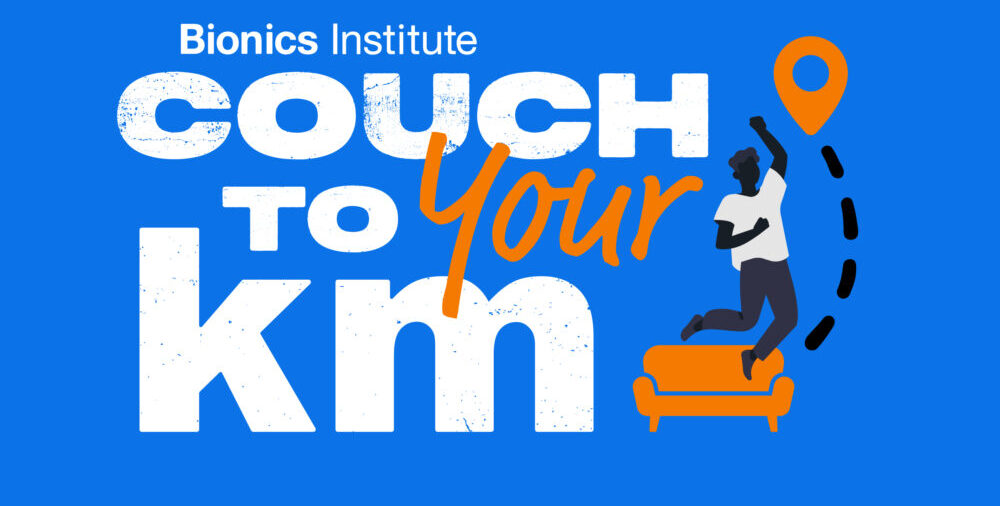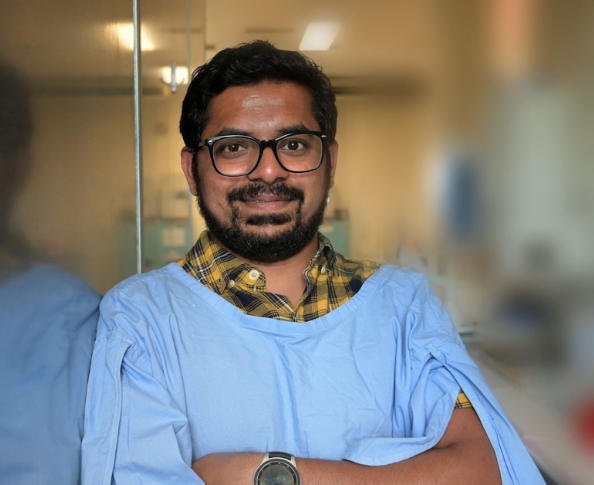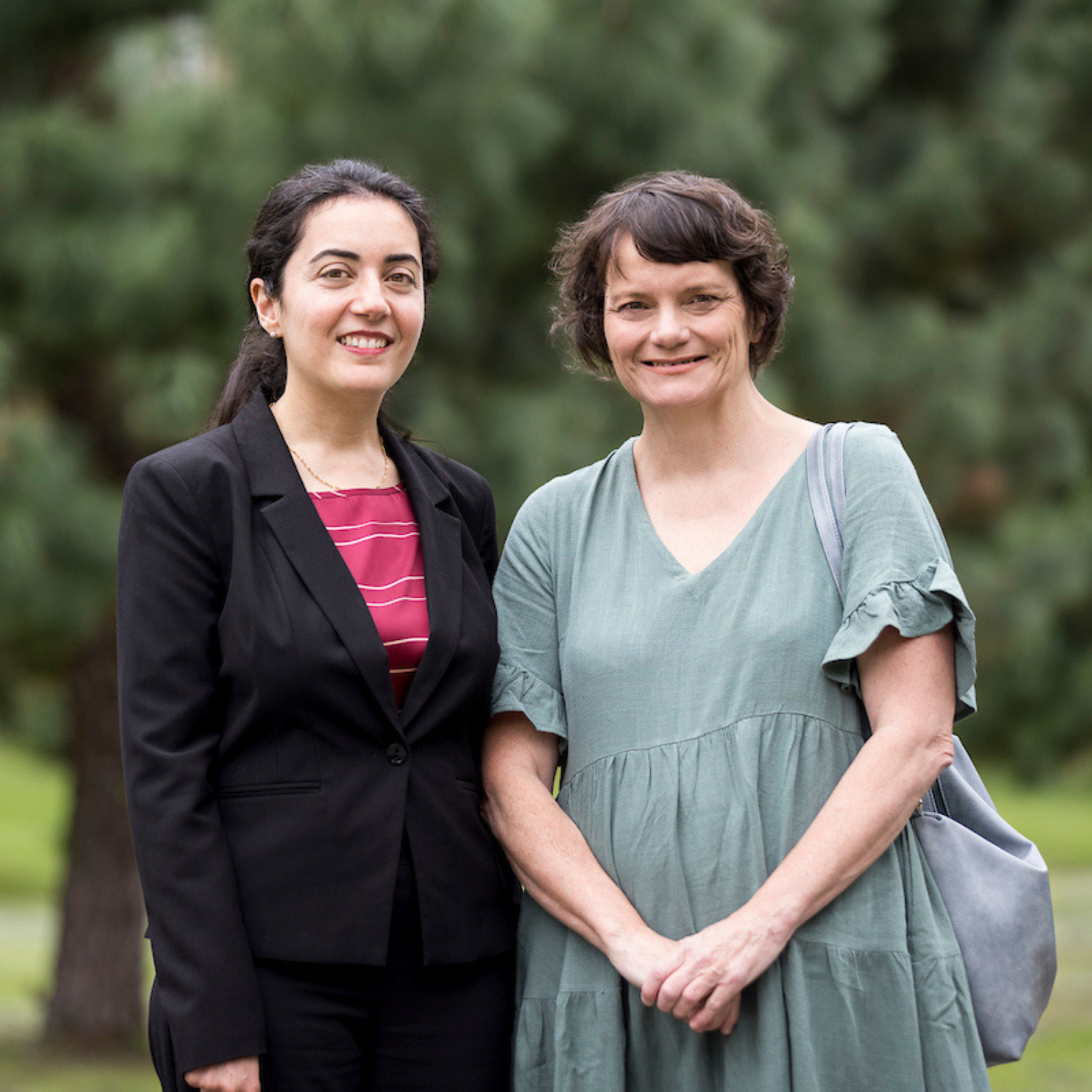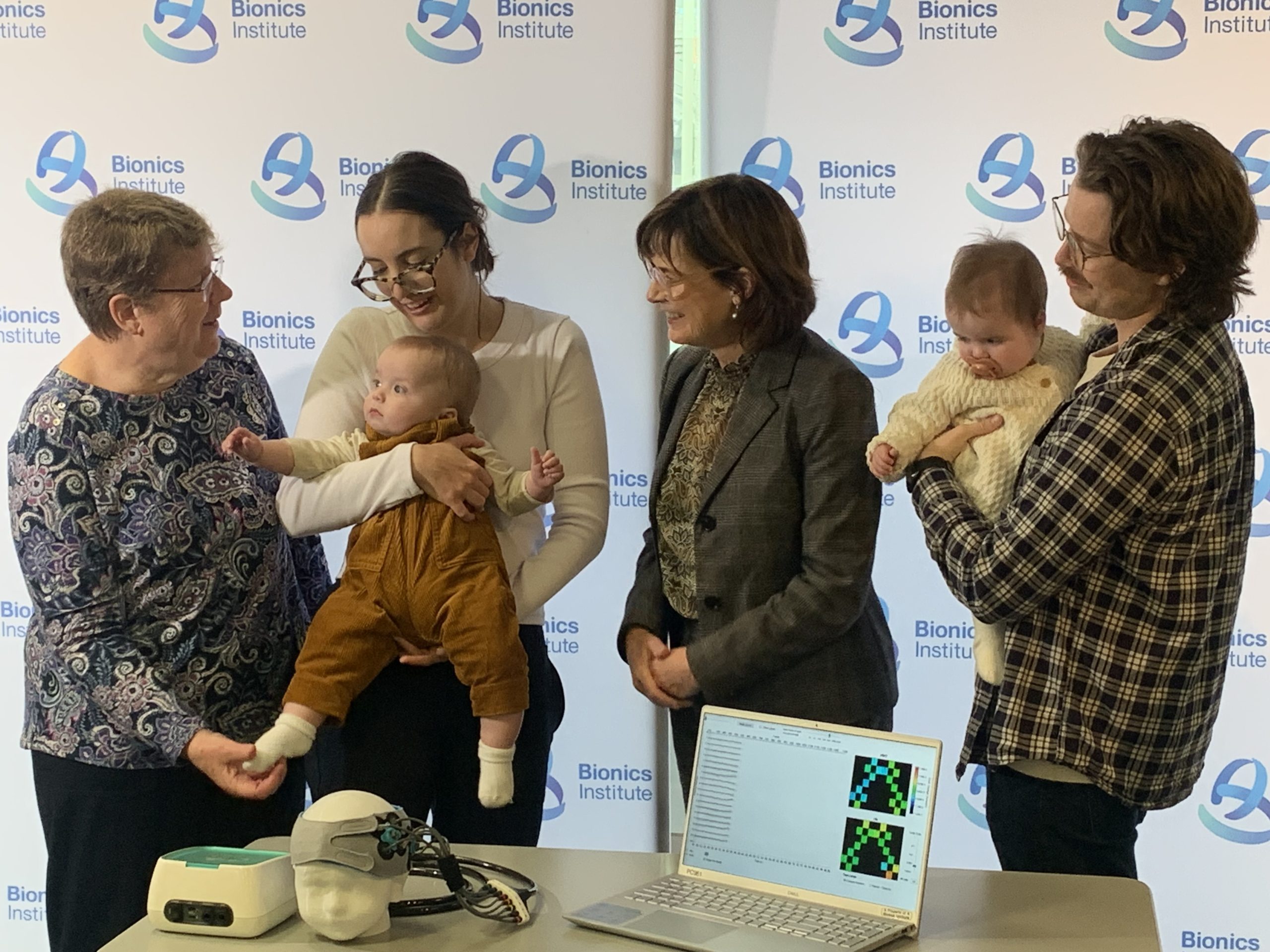
Dr Demi Gao, Senior Research Scientist
Dr Demi Gao is a Senior Research Scientist at the Bionics Institute and Honorary Research Fellow in the Medical Bionics Department, University of Melbourne.
Demi’s research program spans the fields of neural engineering, biomedical engineering, brain imaging and machine learning to understanding human hearing system, including developing techniques for hearing loss diagnosis and optimising the performance of next-generation cochlear implants.
Demi possesses a broad multidisciplinary skill set with a diverse research background encompassing information technology, neural engineering, and bio-signal processing. Since completing her PhD in December 2016, Demi has been awarded over $ 1 Million research fundings as a solo investigator. Demi was awarded a McKenzie Early-Career Fellowship from the University of Melbourne (2019 – 2022), a MRFF MTPConnect Researcher Exchange and Development within Industry (REDI) Fellowship (2022 – 2023) and a Passe and Williams Foundation Mid-Career Fellowship (2024 – 2026).
At Bionics Institute, Demi joined the Translation Hearing Research team led by Professor Colette McKay. Demi is currently leading research on enabling improved cochlear implant programming for infants. In addition, she is also part of the EarGenie® team to develop diagnostic tools for accurate and comprehensive assessment of babys’ hearing based on functional near-infrared spectroscopy (fNIRS) measurement.
LinkedIn: https://www.linkedin.com/in/demi-gao-a2333067/
ORCID: 0000-0002-7059-5594
Google Scholar: Dr Demi Xiao Gao
Research projects
Improved cochlear implant programming for infants
EarGenie hearing test for babies
Selected publications
- E. R. Zoneff, D. X. Gao, D. R. Nisbet, D. B. Grayden, and G. M. Clark. “Restoration of the senses and human communication: Sustainable Development Goals 3 and 9.” International Journal of Speech-Language Pathology (2022): 1-6.
- P. A. Robinson, X. Gao, Y. Han “Relationships between lognormal distributions of neural properties, activity, criticality, and connectivity”, Biological Cybernetics 115, 121-130, 2021.
- X. Gao, D. B. Grayden and M. D. McDonnell “Unifying information theory and machine learning in a model of electrode discrimination in cochlear implants”, PloS ONE 16, e0257568, 2021.
- X. Gao and P. A. Robinson “Importance of self-connections for brain connectivity and spectral connectomics”, Biological Cybernetics, Vol. 114, 643–651, 2020.
- X. Gao, D. B. Grayden and M. D. McDonnell “Modeling electrode place discrimination in cochlear implant stimulation,” IEEE Transactions on Biomedical Engineering, Vol. 64, 2219-2229, 2016.
You might be interested in…
The Passe & Williams Foundation have continued their longstanding support of Bionics Institute hearing researchers with the two prestigious Fellowships.
Dr Anu Sabu
The research will explore the range of physiological changes that enhance the speech comprehension and sound quality, especially in noisy environments. An understanding of how information is processed in the auditory brain of these patients will enable clinicians to make informed decisions on optimising the combined stimulation provided by the cochlear implants and hearing aids for people living with partial deafness.
The results from the research will shed light on the benefits of using a combination of cochlear implants and hearing aids for people with partial hearing loss. Dr Anu Sabu
I’m thrilled to have received this prestigious fellowship to establish and expand my research program. Dr Demi Gao
Congratulations Demi and Anu on this amazing achievement which allows further investigation into how a combination of cochlear implants and hearing aids might give a more unified perception of sound for improved speech understanding.
You might be interested in…
EarGenie hearing test for babies
How does hearing impairment in babies affect speech development?
Babies learn to speak by hearing speech.
So, not being able to hear the vital sounds needed in the early months of life means that speech development in babies who are deaf or hard of hearing can be delayed or permanently affected.
If the right management is not found in the first few months of life, these children never catch up with their peers, which affects their education, communication skills and future success in life.
The earlier that hearing issues are identified, and the baby provided with either a hearing aid or cochlear implant, the sooner they can start learning to speak, and the better language development will be.
What is the current situation with hearing tests for babies?
For many babies, the current newborn hearing tests can indicate how severe the hearing problem is, but do not give key information about whether the brain can discriminate between sounds.
Audiologists need vital information about whether a baby can discriminate between sounds to tune hearing aids or cochlear implants and optimise early intervention.
However, it is often necessary to wait until a baby is 9 months old or older before audiologists can determine if their hearing devices are helping them to hear the sounds they need.
This is because babies are too young to tell audiologists if they can hear sounds or discriminate between them.
Around 10% of hearing-impaired children have a condition called auditory neuropathy and for them the situation is much worse.
They may have to wait up to 2 years before audiologists can select the right device because existing tests do not provide the necessary information.
By this time, their language and communication skills are permanently affected.
Using light to assess hearing in babies
Researchers at the Bionics Institute are working on a new hearing test system called EarGenie, which will revolutionise hearing assessments for babies.
EarGenie uses light ( a technique called functional near-infrared spectroscopy or fNIRS) to measure the brain’s response to sounds.
A band wrapped around the baby’s head contains small light sources and light detectors.
When the brain responds to a sound there is a change in oxygen level which can be detected by EarGenie.
These changes indicate whether the baby has heard the sound; and also whether the baby can tell the difference between two different sounds, known as discrimination.
Eventually this technology will allow audiologists to tune hearing devices, such as hearing aids and cochlear implants, accurately from the very start, allowing babies to hear vital sounds and give them the best start in life.
Next steps for EarGenie
Our team has refined the EarGenie tests and have shown that they are more than 95% accurate in individual babies.
This means that the tests are accurate enough to help guide audiologists when they make important decisions about the best way to optimise the hearing of a baby.
We are undertaking a clinical trial to find out how useful the tests are for audiologists.
We are looking for both audiologists and infants with hearing impairment who want to be part of this trial.
We are currently building a prototype EarGenie that audiologists can use in clinics.
Our current research findings have been obtained using our research fNIRS system.
The prototype EarGenie will be clinic-friendly and have automatic analysis so the audiologist can run a hearing test and get the result in the same test session.
The new prototype EarGenie will be available for clinical trials in the later part of 2023.
These trials are an important step towards commercialisation of EarGenie, and from there to make EarGenie available to clinics worldwide.
Want to get involved?
For families with infants
To continue with our research and development, we need to test EarGenie on infants younger than 24 months old, both with and without hearing impairment in our East Melbourne testing centre.
If your child is under 24 months of age, please consider participating in this vital research. We are looking for babies who are hard of hearing (any type) as well as those without hearing impairment.
Your participation will involve a single visit to the Bionics Institute for an EarGenie test.
For audiologists
If you are an audiologist and work in a paediatric setting, you can participate in our current clinical trial.
We need more than 40 audiologists to participate.
You will be asked to provide online answers to clinical questions about individual (anonymised) infant data, and participation will only require about 10 minutes of your time several times a month
Team members:
Dr Julia Wunderlich, Ms Linty McDonald, Dr Darren Mao, Dr Demi Gao and Dr Gautam Balasubramanian.
More information for researchers
Speech discrimination assessment is a key component of the audiometric test battery because of its functional relevance and importance for device choice (e.g., hearing aid versus cochlear implant). However, there is currently no reliable and clinically feasible test (behavioural or objective) to measure speech discrimination in infants. The average age of diagnosis has been greatly reduced by the introduction of universal newborn hearing screening, meaning that new clinical tests, applicable to very young infants, are required. The absence of such tests means that for individual infants, the optimal choice of hearing device and its accurate programming can be substantially delayed by many months.
Researchers in the Bionics Institute are using fNIRS, a neuroimaging technique that is portable, relatively cheap, and clinical-friendly in sleeping infants to address this gap. Apart from its suitability for use in infants, two other features of fNIRS make it an attractive modality in infants compared to auditory evoked potentials. Firstly, fNIRS allows testing without interference from electrical artifacts, a particularly useful feature when assessing cochlear implant users. Secondly, fNIRS can be used in infants with auditory neuropathy, as it does not rely on neural synchrony.
The research has involved creating novel stimulation protocols and an automated response detection algorithm that has resulted in a test for speech sound discrimination with >95% accuracy. The team is now building a commercial EarGenie prototype for use in audiology clinics and are conducting a clinical trial to prepare for regulatory approval.
Publications
McKay, C., Wunderlich, J., Mao, D., Balasubramanian, G., Lee, O. W., Gao, D., & McDonald, L. (2023, June 20). A reliable, accurate, and clinic-friendly objective test of speech sound detection and discrimination in sleeping infants. https://doi.org/10.31234/osf.io/fbwcm
Lee, O. W., Mao, D., Wunderlich, J., Balasubramanian, G., Haneman, M., Korneev, M., & McKay, C. M. (2023). Two independent response mechanisms to auditory stimuli measured with fNIRS in sleeping infants. Preprint available at Research Square [https://doi.org/10.21203/rs.3.rs-2493723/v1].
Mao D, Wunderlich J, Savkovic B, Jeffreys E, Nicholls N, Lee OW, et al. Speech token detection and discrimination in individual infants using functional near-infrared spectroscopy. Scientific Reports. 2021;11(1):24006. https://doi.org/10.1038/s41598-021-03595-z
Lee, O.W., Mao, D., Savkovic, B., Wunderlich, j., Nicholls, N., Jeffreys, E., Eager, M., Korneev, M., McKay, C.M. The Use of Heart Rate Responses Extracted from Functional Near-Infrared Spectroscopy Data as a Measure of Speech Discrimination Ability in Sleeping Infants. Ear and Hearing, 2023 Jan 14. doi:10.1097/AUD.0000000000001325. Online ahead of print.
Peng, T., Esmaelpoor, J., Mao, D., Lee, O.W., Balasubramanian, G., Wunderlich, J., McKay, C.M. A Parametric Model for Characterizing Time-Variant Single Trials of Block-Design fNIRS Experiments. by 45th Annual International Conference of the IEEE Engineering in Medicine and Biology Society July 24-28, 2023, ICC Sydney, Australia.
PhD Projects Available
PhD Projects that can be supported by enrolling university scholarships or Bionics Institute scholarships
Click on each PhD title to learn more and see the notes below on enrolling universities and scholarship opportunities
Advanced recording techniques for neuromodulation devices
Auditory system plasticity: from the ear to the cortex
Better understanding of infants’ hearing using fNIRS
Developing a drug therapy for hearing loss
Developing miniturised peripheral nerve interface technology for abdominal vagus nerve stimulation
Enabling improved cochlear implant programming for infants
Improving speech understanding of cochlear implant users with neural dead regions in the cochlea
Machine learning approaches for evaluating cortical neuroplasticity in cochlear implant recipients
Optimised closed-loop bioelectrical control over bladder function
Optogenetic neuromodulation strategies for a drug-free solution for chronic pain
Optogenetics for precise neural stimulation
Refining deep brain stimulation with optogenetics
Understanding how the brain processes combines electrical and acoustic stimulation
Supplementary Information
Bionics Institute supervisors are affiliated with the University of Melbourne. However we welcome collaborative efforts with external supervisors from other enrolling universities.
High-achieving students are encouraged to apply for a Bionics Institute Innovate for Life Scholarship, which provides a stipend of $35,000 per annum for up to four years.
PhD students in these projects who do not receive a Bionics Institute Innovate for Life Scholarship can be supported by scholarships awarded by the enrolling university. Affiliated supervisors can assist in the application procedure for these scholarships.
PhD Projects with scholarships from RMIT and the University of Melbourne
Please click on each PhD title to learn more.
Developing miniaturised peripheral nerve interface technology for abdominal vagus nerve stimulation
This project is associated with a scholarship from RMIT for $31,885 per annum for three years.
Understanding how the brain processes combined electrical and acoustic stimulation
This project is associated with a scholarship from the University of Melbourne for $32,400 per annum for three years.
PhD Project Information
Click on the + to expand the PhD project you’re interested in
- Supervisors: James Fallon, Alex Thompson
- Research theme: Brain Research
- Enrolling university: The University of Melbourne
Modern neuromodulation devices are moving towards closed-loop control, often requiring the recording of neural signals from the nerves. Two key issues faces by such system are low power requirements and stimulus artefacts
An option to reduce power consumption is to improve the efficiency of onboard signal processing. Another way to reduce computation is to offload the information to an external device for processing via a wireless link. However, transmitting data wirelessly is expensive and you wish to send as little information as possible.
Traditionally, the amount of information you need to transmit over the wireless link is dictated by the rate of change of the signal. Nyquist theory states that you need to sample at twice the rate of the fastest changing component you wish to capture. However, this is only true for signals that are regularly sampled
An alternative approach is to do non-linear sampling of the signal, it is then possible to accurately estimate properties of your signal (neural measure in our case) from far fewer samples than required by the Nyquist theorem. This field of signal processing is called compressed sensing or sparse sampling.
Nothing is free however, and the reduced sampling rate comes at the cost of increased computation, but this computation will be done by the external device with larger battery and CPU, or even offloaded to the cloud.
To deal with stimulus artefacts, current systems typically rely on ‘brute-force’ approaches including high-sampling rates and complex filtering. By utilising known key features of the neural response of interest, more efficient and robust recording techniques are possible.
Suitable background of students: Engineering (eg. Biomedical, Electrical)
To register your interest in completing this PhD at the Bionics Institute please complete the registration form.
Registration form- Supervisors: Professor Kate Hoy, Dr Oscar Murphy, Dr Sung Wook Chung, Dr Mehrnaz Shoushtarian.
- Research theme: Brain Research
- Enrolling university: The University of Melbourne
There is increasing evidence that dysfunctional connectivity is the likely proximate cause of cognitive impairment in Alzheimer’s disease. However, there is significant inconsistency with respect to findings across different modalities and across different stages of illness.
The proposed research program will conduct a comprehensive multimodal cross-sectional investigation of dysfunctional connectivity. It will look at resting state connectivity from fMRI, EEG and fMRI in 120 people (40 people with mild to moderate Alzheimer’s, 40 people with MCI and 40 healthy older adults) and investigate the association between these imaging measures and cognitive and functional assessments.
The proposed research will greatly increase our understanding of the brain activity underlying cognitive impairment in Alzheimer’s disease, contributing to the development of novel therapeutic targets for this devastating illness.
Suitable background of students: Experience in analysing EEG, fMRI and/or fNIRS data, experience in recruiting and interviewing participants and preferably a psychology or neuroscience student.
General methods to be used in the project: EEG, fMRI, fNIRS, Cognitive and Functional assessments.
To register your interest in completing this PhD at the Bionics Institute please complete the registration form.
Registration form- Supervisors: Demi Gao, James Fallon, Anu Sabu
- Research theme: Hearing Research
- Enrolling university: The University of Melbourne
Evidence have demonstrated that the auditory system constantly changes in the structure and function, extending from peripheral structures into auditory cortex, in response to changes in auditory input.
The duration of auditory system plasticity ranges from rapid adaptation to stimulus to long-term changes associated with hearing loss or cochlear implantation. Most forms of auditory system plasticity are adaptive to optimise auditory performance, which in principle can be used for therapeutic purposes.
This project aims to establishing a model that capture the general principles of auditory system plasticity from peripheral structures to auditory cortex. Specifically, we aim to develop a model of auditory system that allows the investigation of the underlying mechanisms of the plasticity at different levels of the auditory pathway, and to investigate possible plasticity-based strategies that may prevent/reverse the functional and organisational changes in auditory cortex caused by hearing loss. The outcome of the project may lead to future clinical changes towards the neuroplasticity-based therapeutic interventions for cochlear Implant rehabilitation.
General methods to be used in the project: Computational modeling, Electrophysiology
Suitable background of students: Biomedicine or Engineering (eg. Biomedical, Electrical)
To register your interest in completing this PhD at the Bionics Institute please complete the registration form.
Registration form- Supervisors: Dr Demi Gao, Dr Julia Wunderlich, Dr Tommy Peng, Prof Colette McKay
- Research theme: Hearing and Vision Research
- Enrolling university: The University of Melbourne
Children with a permanent hearing loss could severely impair language development, leading to life-long impact on their education, employment, social and mental health. The delay between identification of hearing loss and provision of optimal access to sound via a hearing instrument is extremely detrimental to language development. Hearing research have always been seeking to better understand the relationship between the neural mechanisms and speech understanding, with the goals of advancing hearing device technology and improving hearing loss diagnosis and management. Functional near infra-red spectroscopy (fNIRS) is a safe, non-invasive technique that making it ideal for the assessment of hearing mechanisms. In this project, we use fNIRS to record the cortical neural response to sounds. This project aims to analyse the fNIRS response of sleeping infants to better understand their discrimination ability of different sound intensities and speech contrasts.
General methods to be used in the project: fNIRS, signal processing, data mining.
Suitable background of students: Engineer/IT/Neuroscience graduate with good signal processing and programming skills. Strong interpersonal skills are required as the student will be working in a multi-disciplinary team and will be working with study participants.
To register your interest in completing this PhD at the Bionics Institute please complete the registration form.
Registration form- Supervisor: A/Prof Andrew Wise, Dr Niliksha Gunewardene
- Research theme: Hearing and Vision Research
- Enrolling university: The University of Melbourne
Hair cells, the receptor cells for sound, are a highly susceptible part of the auditory system. Hair cell loss is the leading cause of deafness, occurring in almost half a billion people worldwide.
Despite the prevalence, there are no biological treatments available for deafness. The current standards of care are restricted to palliative devices including hearing aids or cochlear implants that provide only partial hearing restoration for a limited patient population. As such, there is a significant demand for the development of a pharmacological treatment for hearing loss.
Manipulating specific cell developmental pathways in cochlear stem cells is a potential approach to activate hair cell regeneration and reverse hearing loss. This project aims to test small molecules or drugs that regulate pathways required for hair cell development for the treatment of hearing loss. The available projects fall into two categories and can be modified to suit individual background/strengths.
- In vitro: Developing a drug screening platform to test the efficacy of small molecules or drugs in promoting hair cell differentiation
- In vivo: Investigating the potential of specific drug treatments in promoting hair cell regeneration and restoring hearing function in pre-clinical deafness models
Internal funding may be available to support a stipend for competitive and highly motivated students working in this project.
General methods to be used in the project: application of cell culture, next-generation sequencing, standard molecular biology, surgery, histology, and hearing physiology techniques to assess the efficacy of drug treatments in experimental models.
Suitable background of students: Cell or molecular biology, physiology, biomedicine, genetics or neuroscience.
To register your interest in completing this PhD at the Bionics Institute please complete the registration form.
Registration form- Supervisors: Dr Sophie Payne (Bionics Institute, Owen Burns (Bionics Institute), A/Prof Elisa Hill (RMIT)
- Research theme: Autoimmune and Chronic Condition Research
- Enrolling university: RMIT
- Scholarship: $31,885 per annum for three years with a possible extension of six months (full-time).
This project will expand Bionics Institute’s vagus nerve stimulation technology and utilise novel thin-film fabrication techniques to develop a miniaturised peripheral nerve array for abdominal vagus nerve of mice.
The peripheral nervous system has extensive surgically accessible nerve connections with the central nervous system and the body’s organs, in particular the gastrointestinal tract. This provides the opportunity to exploit rapidly advancing methods of electrically stimulating the peripheral nervous system to treat human diseases. At the core of such ‘electric medicine’ research lies the concept of stimulating the vagus nerve, an autonomic nerve that has successfully been used as a clinical treatment of epilepsy, depression, migraines, obesity, and shows promise as a treatment for the immune-mediated diseases inflammatory bowel disease and rheumatoid arthritis. The effects of vagus nerve stimulation (VNS) are diverse and has created considerable interest in the clinical community as we are only scratching the surface of what this system is capable of.
At the Bionics Institute, we have previously developed and validated a cuff electrode array designed for long-term implantation onto the abdominal vagus nerve of rats and sheep. This technology was used to valid the efficacy of vagus nerve stimulation to relieve experimental intestinal inflammation and is now entering clinical trials for the treatment of Crohn’s disease. There are numerous mouse genetic models of human diseases, which are an essential tool for understanding mechanisms of disease and discovering new therapies. As such, the overall goal of this project is to expand our vagus nerve stimulation technology and adapt it to awake, freely moving mice. Specifically, the project aims to utilise novel thin-film fabrication techniques to develop a miniaturised peripheral nerve array, designed for safe, long-term implantation onto the abdominal vagus nerve of awake mice. Efficacy of stimulation will be assessed in a mouse disease model.
General methods to be used in the project: Electrode design and development, fabrication of electrodes, chronic in vivo stimulation and recording and electrophysiological testing, histology, intestinal permeability, molecular and microbial assays
Suitable background of students: Bioengineering, Electrical engineering, Neuroscience
To register your interest in completing this PhD at the Bionics Institute please complete the registration form.
Registration form- Supervisors: Demi Gao, Tommy Peng, Julia Wunderlich, Colette McKay
- Research theme: Hearing and Vision Research Research
- Enrolling university: University of Melbourne
Babies born with hearing impairment can miss out on the vital sounds they need to hear to learn to speak. If the right hearing treatment is not provided in the first months of life, they never fully catch up with their peers, and have a permanent communication deficit delay.
In our lab, we have pioneered a new hearing test that informs if a baby can hear the difference between speech sounds using functional near infra-red spectroscopy (fNIRS), a light-based non-invasive brain imaging technique.
This project aims to interpret fNIRS data recorded from sleeping infants with cochlear implants to develop an objective method to appropriately program cochlear implants for babies early in life so that they can learn to speak and have the best start in life.
General methods to be used in the project: fNIRS, signal processing, data mining
Suitable background of students: Engineer/IT/Neuroscience graduate with good signal processing and programming skills. Strong interpersonal skills are required as the student will be working in a multi-disciplinary team and will be working with study participants.
To register your interest in completing this PhD at the Bionics Institute please complete the registration form.
Registration form- Supervisors: A/Prof James Fallon, Dr Alex Thompson
- Research theme: Hearing and Vision Research
- Enrolling university: The University of Melbourne
Behavioural training in pre-clinical models allows the testing of perception of complex sounds. When applied to models with cochlear implants or treated with hearing therapeutics, this provides important information on the performance of the intervention.
This can provide more clinically relevant information than is obtained with traditional functional measurements or from histology. This added information is important, as many treatments or stimulation techniques look promising in pre-clinical models but fail in the clinic. Using behavioural training, we aim to reduce the gap between pre-clinical and clinical studies.
This project will develop new techniques for behavioural training in pre-clinical models and test the response to complex stimuli. Results will be compared against traditional electrophysiological recordings and histology.
General methods to be used in the project: behavioural training, signal processing, electrical engineering, electrophysiology.
Suitable background of students: science (e.g. biomedical) or engineering (biomedical, electrical).
To register your interest in completing this PhD at the Bionics Institute please complete the registration form.
Registration form- Supervisors: Tommy Peng, Demi Gao, Katherine Henshall
- Research theme: Hearing and Vision Research
- Enrolling university: The University of Melbourne
Cochlear implants use electrical stimulation to restore hearing for people with severe to profound hearing loss. However, not every cochlear implant recipient achieves good speech understanding outcomes. The are many possible contributing neurological factors for poorer speech understanding outcomes.
One reason for this is the presence of neural ‘dead regions’ in the cochlea. These dead regions affect speech understanding by making it difficult for each component frequency in a speech signal to be independently heard. Thus, implant users experience a ‘scrambled’ speech signal. This project will evaluate and address patient-specific differences at the electrode-neuron interface to improve speech understanding outcomes.
In this project, we will use a psychophysical method to determine which parts of the cochlear contain neural dead regions in each individual. Then we will construct an individualised program for each individual that avoids using intra-cochlear electrodes that are near those dead regions. We will then evaluate whether this new individualised program improves their speech understanding. This project is a major opportunity to actually improve the quality of life of cochlear implantees and contribute to novel clinical management techniques.
This project will support potentially lead to new clinical procedures to optimize the programming of cochlear implants for individual people.
General methods to be used in the project: psychophysics, electrophysiology, and cochlear implant programming.
Suitable background of students: audiology, neuroscience, engineering, experimental psychology or related disciplines. Strong interpersonal skills are required as the student will be working directly with deaf individuals with a cochlear implant.
To register your interest in completing this PhD at the Bionics Institute please complete the registration form.
Registration form- Supervisors: Dr Tommy Peng, Dr Demi Gao, Dr Katherine Henshall and Dr Gautam Balasubramanian
- Research theme: Hearing and vision research
- Enrolling university: The University of Melbourne
Cochlear implants use electrical stimulation to restore hearing for people with severe to profound hearing loss.
However, not every cochlear implant recipient achieves good speech understanding outcomes.
There are many possible contributing neurological factors for poorer speech understanding outcomes.
This project will evaluate cerebral cortex changes after implantation in recipients and how it correlates with speech understanding outcomes.
Our lab uses functional near infra-red spectroscopy (fNIRS), a light-based non-invasive brain imaging technique, to study how the brain reorganises after deafness and electric hearing restoration for cochlear implant recipients.
This project aims to record, analyse, and interpret fNIRS data recorded from cochlear implant recipients.
The data will then be applied in machine learning approaches to predict speech understanding outcomes.
TThe developed technology will enable clinicians to better allocate their time and resources and to increase the benefit that people will get from cochlear implants.
General methods to be used in the project: fNIRS, signal processing, machine learning.
Suitable background of students: Engineer graduate or data scientist with high-level signal processing skills
To register your interest in completing this PhD at the Bionics Institute please complete the registration form.
Registration form- Supervisors: Rachael Richardson, James Fallon, Tommy Peng
- Research theme: Hearing and vision research
- Enrolling university: The University of Melbourne
The sound encoding strategy of modern cochlear implants depends on pulsatile stimulation because the pulses need to be temporally interleaved to reduce the summation of electric fields across channels.
This summation effect occurs during multichannel electrical stimulation, including multichannel analog stimulation, due to the extensive spread of electrical current from each electrode.
However, it is well documented that many implant listeners perform better with analog stimulation compared to pulsatile stimulation strategies.
In terms of sound quality, it has been reported that participants using analog stimulation strategies could perceive a “tonal” difference between analog and pulsatile stimulation, with descriptions of the sound being “bell-like” for analog and “harsh” and “distorted” for pulsatile.
Enabling technologies that reduce the spread of activation during stimulation are required for analog stimulation strategies to be more successfully implemented.
We have previously shown that optogenetic stimulation strategies significantly reduce the spread of activation and allow simultaneous stimulation with much lower interactions between channels.
The first aim of this project is to determine whether we can deliver more temporal information to the cochlea using analog light stimulation strategies. The second aim is to determine how well the brain encodes speech tokens during hybrid stimulation of the cochlea in quiet and in the presence of background noise.
The outcomes of the study have the potential to improve the sound quality for cochlear implant users, hence this research aligns with the Bionics Institute’s mission to develop devices the modulate neural activity for managing health conditions.
General methods to be used in the project: Acute surgical methods (cochlear implantation, insertion of recording electrodes), acute electrophysiological recordings, signal processing and data analysis.
Suitable background of students: Neuroscience, Physiology, Biomedical Science, Medical Biotechnology
To register your interest in completing this PhD at the Bionics Institute please complete the registration form.
Registration form- Supervisors: A/Professor James Fallon, Dr Sophie Payne
- Research theme: Autoimmune and Chronic Condition Research
- Enrolling university: The University of Melbourne
The urine produced by the kidneys is stored in the bladder prior to being voided from the body at behaviourally appropriate times (micturition).
However, a number of conditions including spinal cord injury or damage during prostectomy or colorectal resection surgery can lead to urinary incontinence or retention.
Controlling urination with a bionic device implanted onto nerves that innervate the bladder is a novel technique for the treatment of bladder incontinence/retention.
The Bionics Institute have developed a novel method of monitoring activity in the pelvic nerve. Combining this technology with stimulation to activate or inhibit neural signals in order to trigger or prevent urination could form the basis of a closed-loop bioelectric bladder control device.
This project will use the rodent urogenital system to further develop neural recording and stimulation technology to be able to selectively record and active different neural fibre types so that this technology can be utilized to develop closed-loop control over bladder function.
General methods to be used in the project: Electrophysiology; Electrical Stimulation; Physiology; Control Engineering; Histology
Suitable background of students: Neuroscience; endocrinology; bioengineering; physiology; biomedical science.
To register your interest in completing this PhD at the Bionics Institute please complete the registration form.
Registration form- Supervisors: Rachael Richardson, Sophie Payne
- Research theme: Chronic pain research
- Enrolling university: The University of Melbourne
Chronic pain has a huge impact on individuals, families and the healthcare system and the use of pain killers leads to addiction and, too often, overdose.
Electrical implants are a relatively new treatment for chronic pain, but electrical stimulation cannot easily discriminate between the numerous types of fibres in mixed nerve bundles, making it difficult to address pain safely. This shortcoming is preventing its widespread uptake.
We have developed technology that can selectively address nerve fibres relating to pain signalling within a mixed peripheral nerve.
Using optogenetics, we used light to excite only the nerve fibres of interest, leaving neighbouring fibres unaffected. We showed that a combination of light and electrical stimulation provided better precision, efficiency, and safety compared to electrical or optical stimulation alone.
In this project, we aim to compare selective combined stimulation with existing electrical-only methods for pain suppression. We will use an excitatory opsin that is selectively expressed in touch sensory fibres that can mediate analgesia via gating mechanisms. Using electrophysiological readouts (compound action potential and single unit recordings in the sciatic nerve and local field potentials in the dorsal horn) and awake pain behavioural assays in chronically implanted injured rats, we will assess the ability of our selective technologies to block nerve signalling and suppress pain. We will compare these methods to electrical nerve block methods used clinically.
This research aligns with BI’s mission to develop devices the modulate neural activity for managing health conditions.
General methods to be used in the project: Electrophysiological recordings, surgical injection of a viral vector, surgical implantation of a nerve cuff device made in-house, histology, behavioural assays.
Suitable background of students: Neuroscience, Physiology, Biomedical Science, Medical Biotechnology
To register your interest in completing this PhD at the Bionics Institute please complete the registration form.
Registration form- Supervisors: A/Prof Rachael Richardson, A/Prof James Fallon, A/Prof Andrew Wise, Dr Alex Thompson
- Research theme: Hearing and Vision Research and Brain Research
- Enrolling university: The University of Melbourne
The aim of this project is to develop the next generation of neural stimulation devices that use optical stimulation or combined optical/electrical stimulation in order to improve the precision of neural activation. The project will use cutting edge optogenetic techniques to express a light sensitive ion channel in neurons so that they can be activated with low-powered blue micro-LEDs.
Electrophysiological recordings will be used to examine whether optical stimulation strategies can improve the spatial precision of neural activation. A significant advantage of improved precision of stimulation of the auditory nerve, for example, would be the ability to stimulate independent channels that would greatly enrich the auditory percept from a cochlear implant, such as the ability to perceive music.
General methods to be used in the project: electrophysiology, viral gene therapy, surgical device implantation, optical/electrical stimulation, optical modelling, cell culture, histology, immunohistochemistry, behavioural testing.
Suitable background of students: first class honours or equivalent in any of the following disciplines: neuroscience, physiology, biomedical engineering, or similar degrees. Electrophysiology and cell culture skills are desirable.
To register your interest in completing this PhD at the Bionics Institute please complete the registration form.
Registration form- Supervisors: Rachael Richardson, Arnan Mitchell
- Research theme: Brain Research
- Enrolling university: RMIT
Deep brain stimulation (DBS) is an established therapy for several neurological and psychiatric conditions. The therapy involves surgical implantation of electrodes to a target brain region, and delivery of continuous electrical impulses via a neurostimulator to modulate abnormal neural activity.
Despite its rapid implementation and success, undesirable side effects remain a major limitation. These are caused by non-selective stimulation of a mixed population of neurons due to inaccurate electrode positioning and/or spread of electrical current to non-target regions. There is an unmet clinical need to develop approaches that can selectively activate specific neurons or axonal pathways within a DBS target to reduce stimulation-induced side effects and improve the overall effectiveness of the therapy. We recently discovered that hybrid stimulation, a combination of electric and optogenetic stimulation improves the precision of neural activation in the auditory system.
This project aims to explore the potential of hybrid stimulation to improve neural selectivity and the overall efficacy of DBS.
General methods to be used in the project: Device development, stereotactic surgery, electrical/optical stimulation, recording and analysis.
Suitable background of students: Biomedical engineer, Neuroscience
To register your interest in completing this PhD at the Bionics Institute please complete the registration form.
Registration form- Supervisors: A/Prof James Fallon, Dr Alex Thompson>
- Research theme: Brain Research
- Enrolling university: The University of Melbourne
- Scholarship: $32,400 per annum for three years with a possible extension of six months (full-time).
The expansion of criteria for cochlear implantation to include patients with substantial residual hearing has focused interest on the benefits of combined electro-acoustic stimulation (EAS). Although such stimulation via a hybrid cochlear implant (CI) and hearing aid in the same ear has been shown to improve speech understanding, particularly in noise, and to increase the aesthetic quality of sound, almost nothing is known about the physiological mechanisms underlying these benefits. A number of pre-clinical studies have been performed, but they have been based on normal hearing and used simple acoustic and electrical stimulation that are not representative of complex electrical and acoustic information that represent speech and have limited clinical relevance. This project will address this deficiency by investigating EAS in an appropriate model with clinically relevant acoustic and electrical stimuli.
General methods to be used in the project: Electrophysiology, behavioural training, and electrical stimulation.
Suitable background of students: Science, Biomedicine, or Engineering (e.g., Biomedical, Electrical).
To register your interest in completing this PhD at the Bionics Institute please complete the registration form.
Registration form